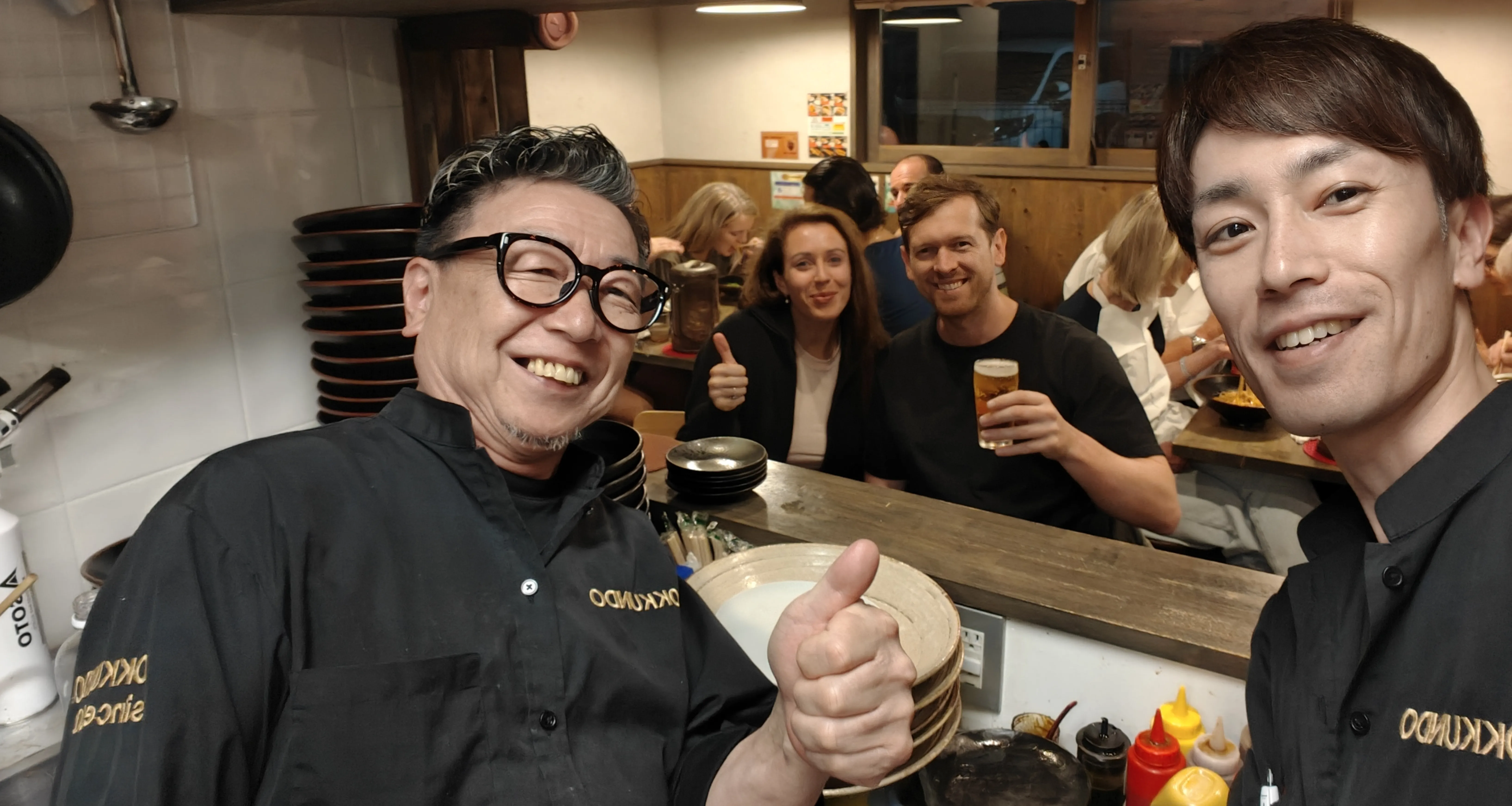Japan
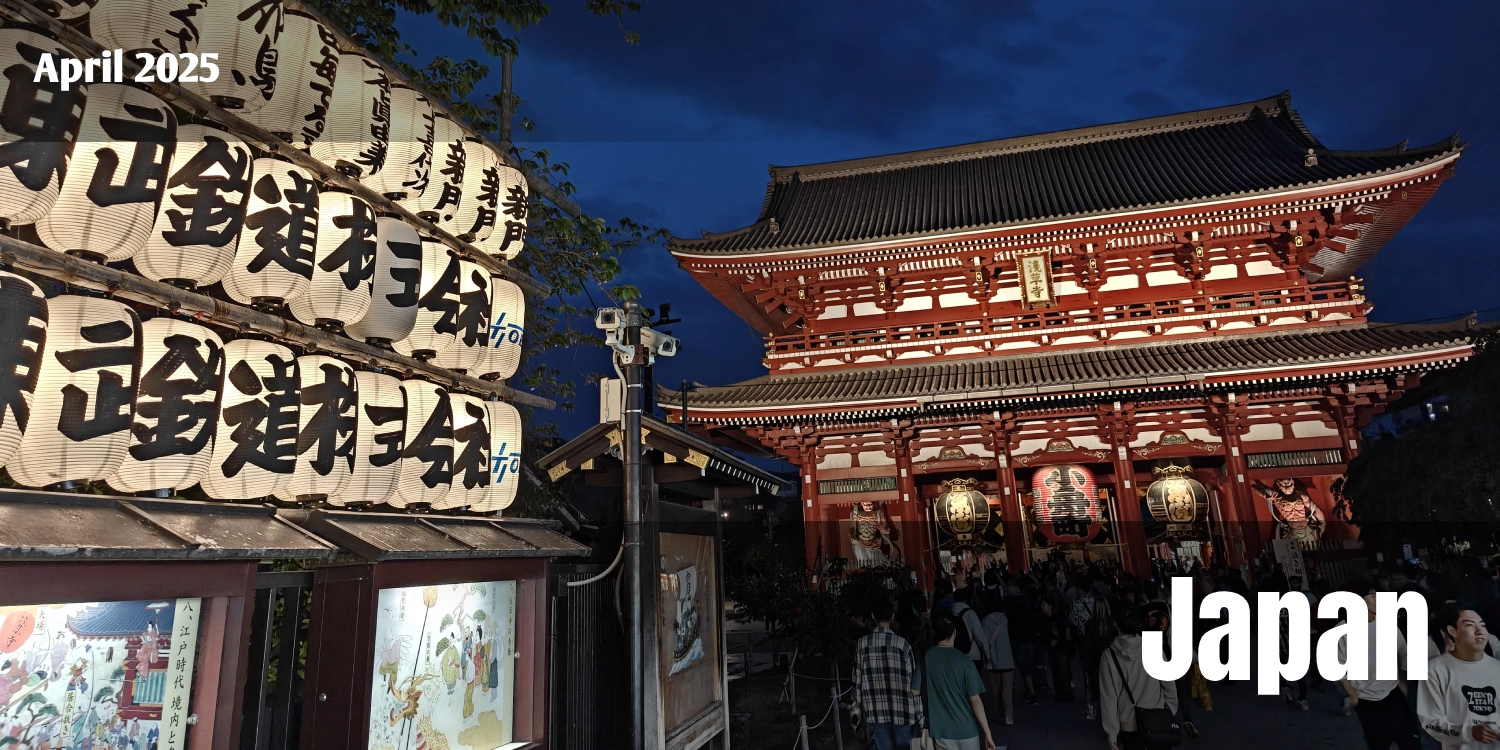
Table of Contents
Itinerary
As we jetted off from London Heathrow to the magical land of Japan—home to ancient temples, buzzing neon streets, and a culture so rich, I couldn’t help but wonder if I’d ever look at food, manners, punctuality, or toilets the same way again. One thing was certain: I was very excited for the adventure ahead.
Our planned itinerary was as follows:
| Location | Nights | Activities |
|---|---|---|
| Tokyo | 3 | - Arrival and settle in Shinjuku - Explore Asakusa, Akihabara or Harajuku, and Tokyo Skytree - Day trips to Nikko and Kamakura |
| Kyoto | 3 | - Visit Kinkaku-ji, Ryoan-ji, and botanical gardens - Explore Gion nightlife and teahouses - Day trip to Nara (Todai-ji Temple and Nara Park) - Fushimi Inari, Nishiki Market, and Arashiyama Bamboo Grove |
| Osaka | 3 | - Explore Dotonbori, Osaka Castle, and Namba nightlife - Day trip to Himeji (Himeji Castle) and Kobe (Wagyu beef) - Visit Osaka Aquarium and Shinsaibashi shopping |
| Hiroshima | 2 | - Visit Hiroshima Peace Memorial Park and Museum - Day trip to Miyajima Island and Mount Misen hike |
| Hakone | 2 | - Visit Hakone Open-Air Museum, Owakudani, Ropeway, and Lake Ashi pirate cruise - Relax at a ryokan and onsen (hot springs) |
| Tokyo (Return) | 2 | - Final sightseeing and local market visit (Omicho Market or similar) - Farewell dinner and final experiences - Departure on May 4 |
Aside from the accommodation bookings we had locked in, our day-by-day plans were more like loose guidelines—enough structure to keep us on track, but still flexible enough to allow for spontaneity once we arrived. The trip spanned just over two weeks, taking advantage of a couple of bank holidays and perfectly timed to catch the tail end of Japan’s famous cherry blossom season.

Tokyo
"I often compare the experience of going to Japan for the first time, going to Tokyo for the first time, to what Eric Clapton and Pete Townshend—the reigning guitar gods of England—must have gone through the week that Jimi Hendrix came to town." Anthony Bourdain
Touching down at Haneda Airport in Tokyo, our first mission was to get our hands on a Suica card—a contactless travel card similar to London’s Oyster. It works seamlessly across trains, buses, and even vending machines. Honestly, it felt like a second passport. Losing it would’ve been a huge mistake! It's a real shame that only Apple supports this digitally and not Android.
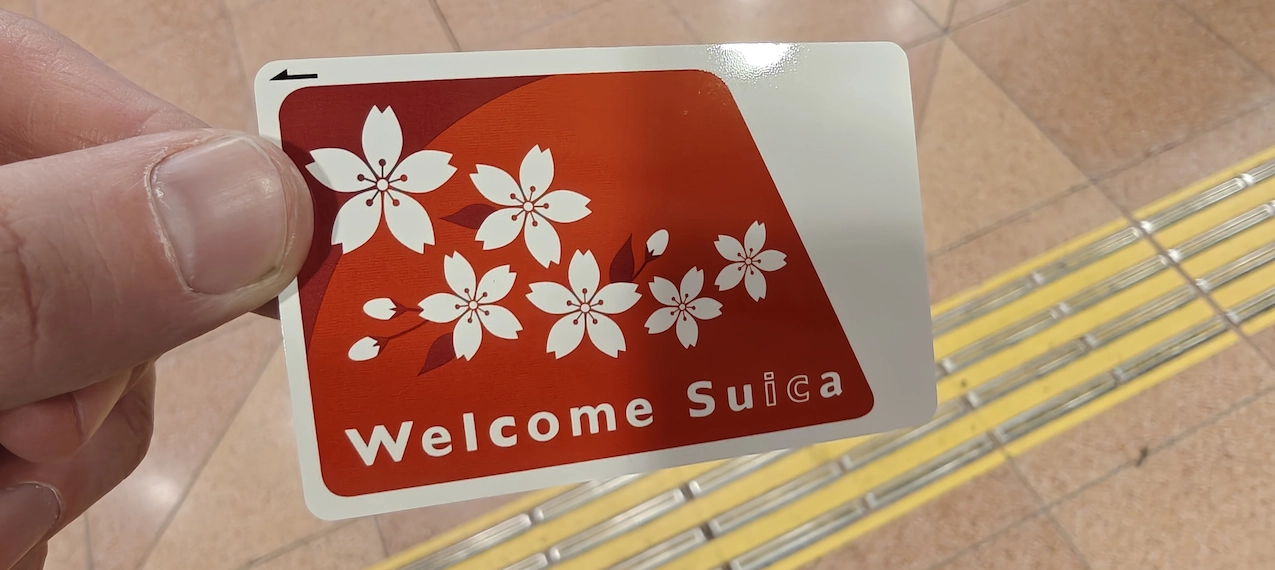
Getting out of the airport, was a bit more complicated than expected. We fumbled around trying to generate a QR code, scanned our fingerprints and passports, and figured we were good to go—but nope. One more queue for a manual check. Welcome to Japan: high-tech meets high-process.
19-04-2025
We had been on a 13-hour flight with next to no sleep, and made the smart decision to dive straight into a full day of exploring. Waiting for us was Mura, our private tour guide, who had carefully crafted an itinerary based on two key priorities: eating well and seeing everything we could.

Our first stop was Shinjuku Gyoen National Garden, where we caught the tail end of the cherry blossom bloom. It was the perfect place to ease into the trip. Peaceful, scenic, and full of families out enjoying the sunshine. The weather couldn’t have been better.
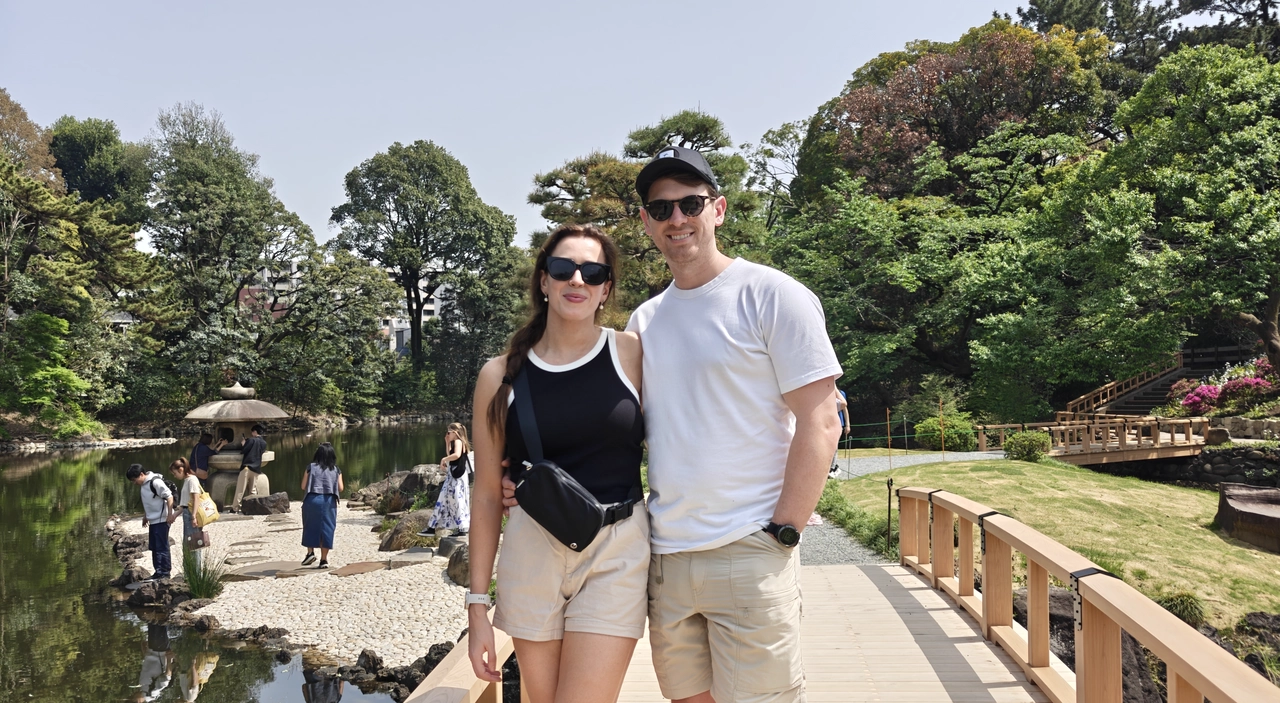
We found a quiet patch in the gardens to rest our jet-lagged legs, and soon after, Mura gave us a bite-sized history lesson on Japan. He explained how Kyoto was once the imperial capital, walked us through the shifting timelines of Japan’s ruling empires, and touched on the country’s centuries-long period of self-imposed isolation.
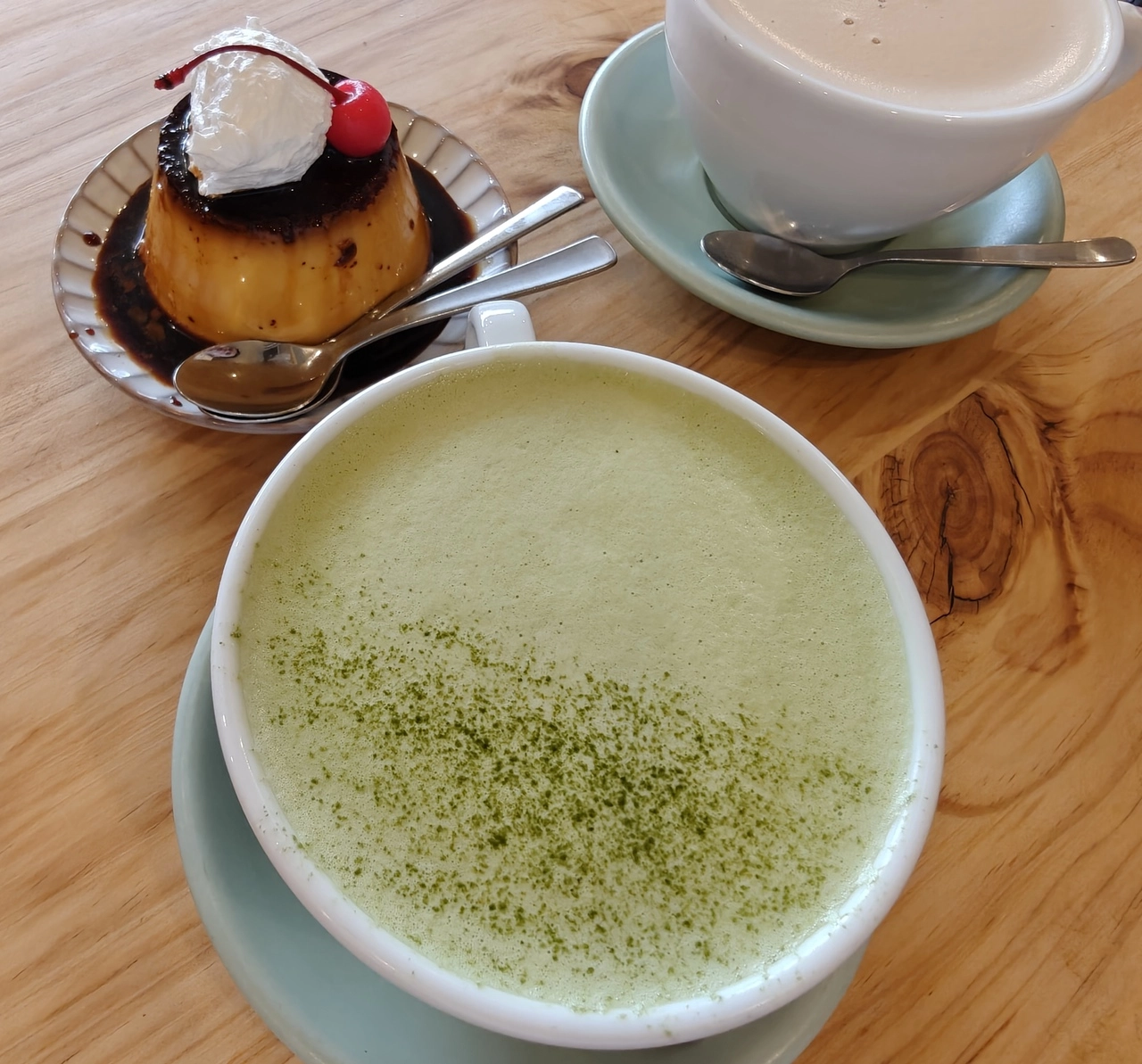
We stopped off at a popular coffee shop to get a classic pudding and some coffees. I was keen to try the glorious matcha lattes. We were quickly introduced to a very Japanese custom: if something has good reviews, expect a queue. Patience is practically part of the experience.
Just outside, we witnessed something... unexpected. A lifeless pigeon lay on the pavement, and no fewer than four policemen were standing around it, taking photos and investigating the scene for a good half hour. It felt like a live taping of CSI: Tokyo or an oddly specific episode of Dexter.
We made our way to Tokyo Tower, a striking landmark that offers great city views. Not far from it, we visited Zojo-ji Temple, part of the Jodo-shu Buddhist sect and home to the tombs of several Tokugawa shoguns. Despite being in the heart of the city, the temple grounds had a quiet, calming presence.
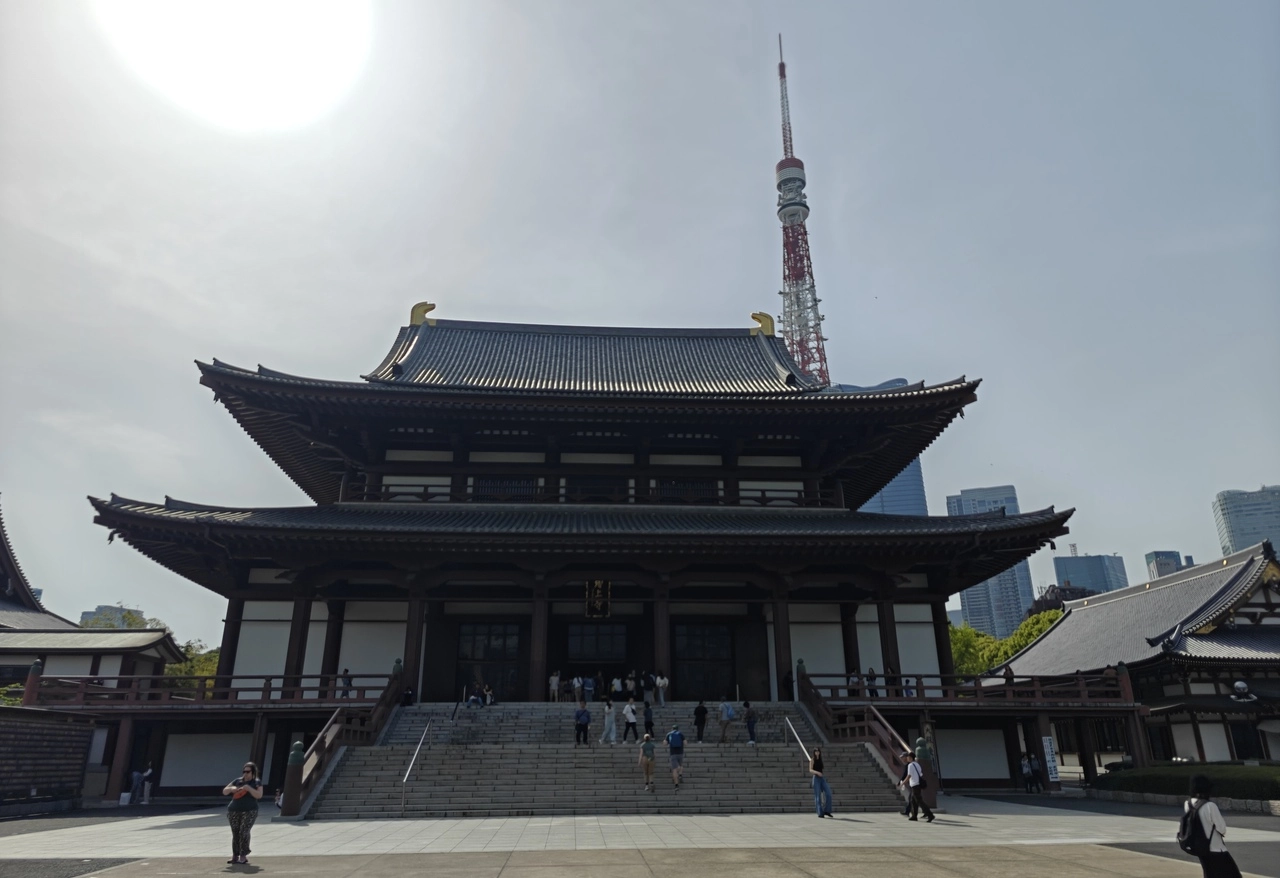
From there, we headed to the Imperial Palace, passing through Hibiya Park along the way. We entered via Sakurada-mon, a grand old gate flanked by thick wooden doors and solid stone walls, setting the tone for the grandeur beyond.
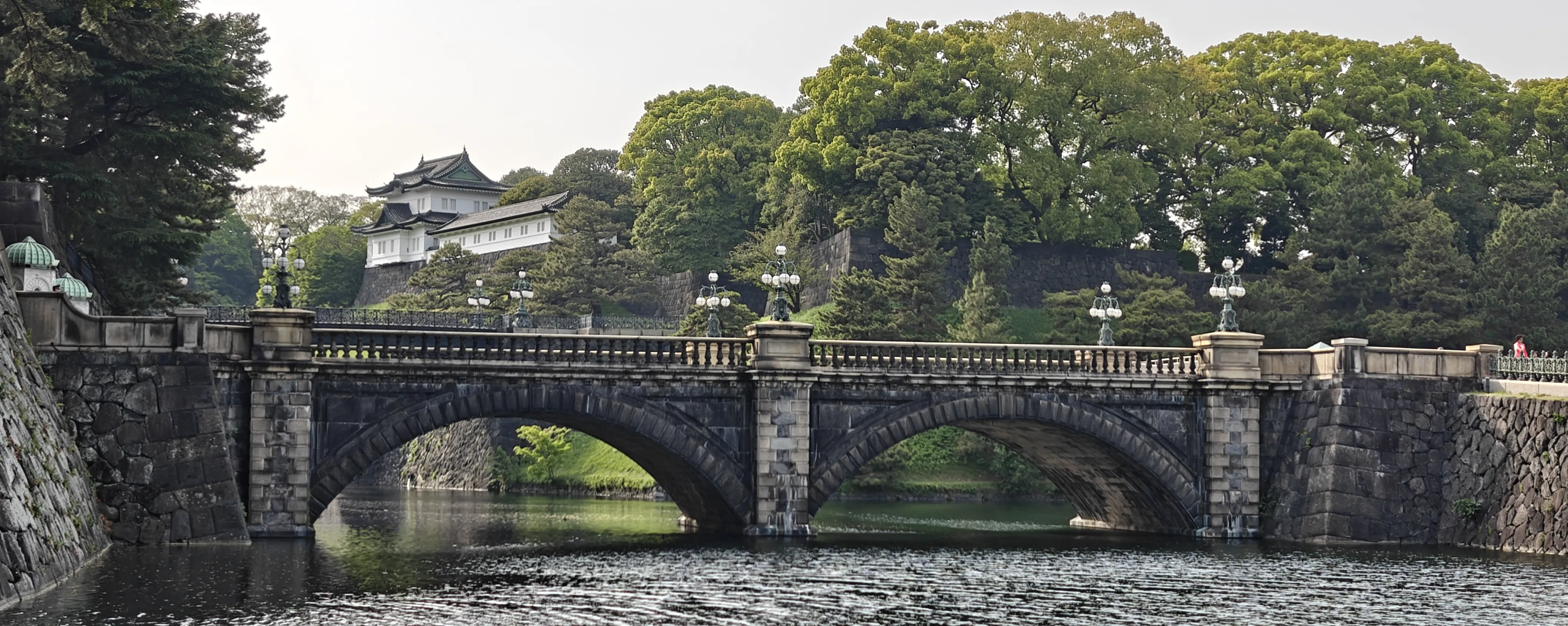
The Imperial Palace is the official residence of the Japanese Emperor, but it was once the site of Edo Castle—built in 1457 and, at one point, the largest fortress in the world. Unfortunately, much of it was lost to a fire in 1873. (Fun fact: Edo was the former name of Tokyo.)
Not far from the palace grounds, we stumbled upon a statue of a samurai mid-charge—sword raised, horse rearing. He looks like someone not to mess with that's for sure.
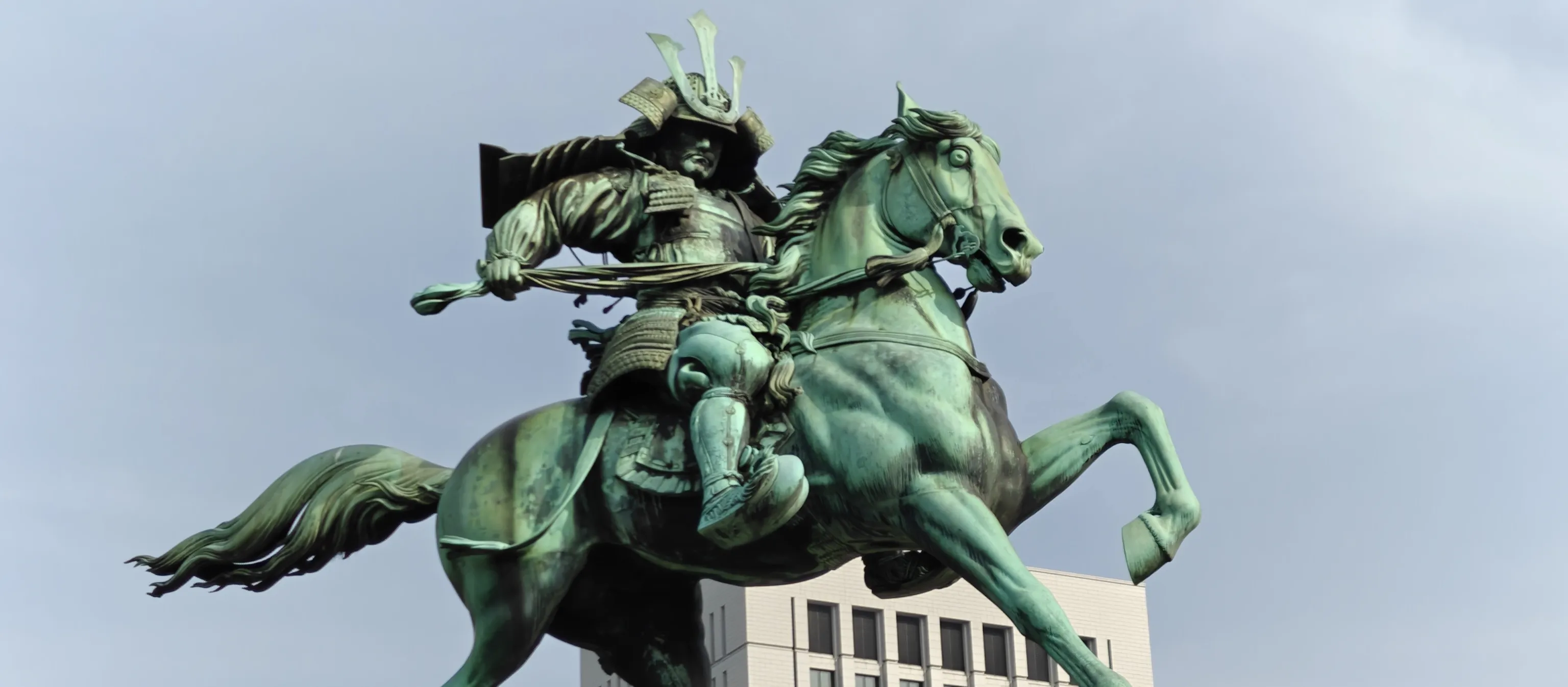
By the afternoon, jet lag was definitely catching up with us—but we had one final stop: the Meiji Shrine. Tucked away in a tranquil forest setting, it felt like a world apart from the busy streets of Tokyo. The shrine was built to honour Emperor Meiji and Empress Shoken, who played a key role in Japan’s rapid modernisation. We followed tradition—tossed a coin, bowed, and clapped twice—taking a quiet moment to reflect.
After saying goodbye to Mura, we headed to our dinner spot for the night: Teppan Baby. Thankfully, we’d booked ahead—it was packed. As you descend into the basement and take your seat, the staff burst into applause. For a split second, it feels like you’ve just won the lottery... until you realise they do it for everyone. Still, it’s a fun touch.
We both ordered the house speciality: Okonomiyaki, a savoury pan-fried pancake stacked with pork, noodles, a shredded cabbage base, and a light batter. It was incredible. There are two main regional styles—Osaka and Hiroshima—each with its own twist.
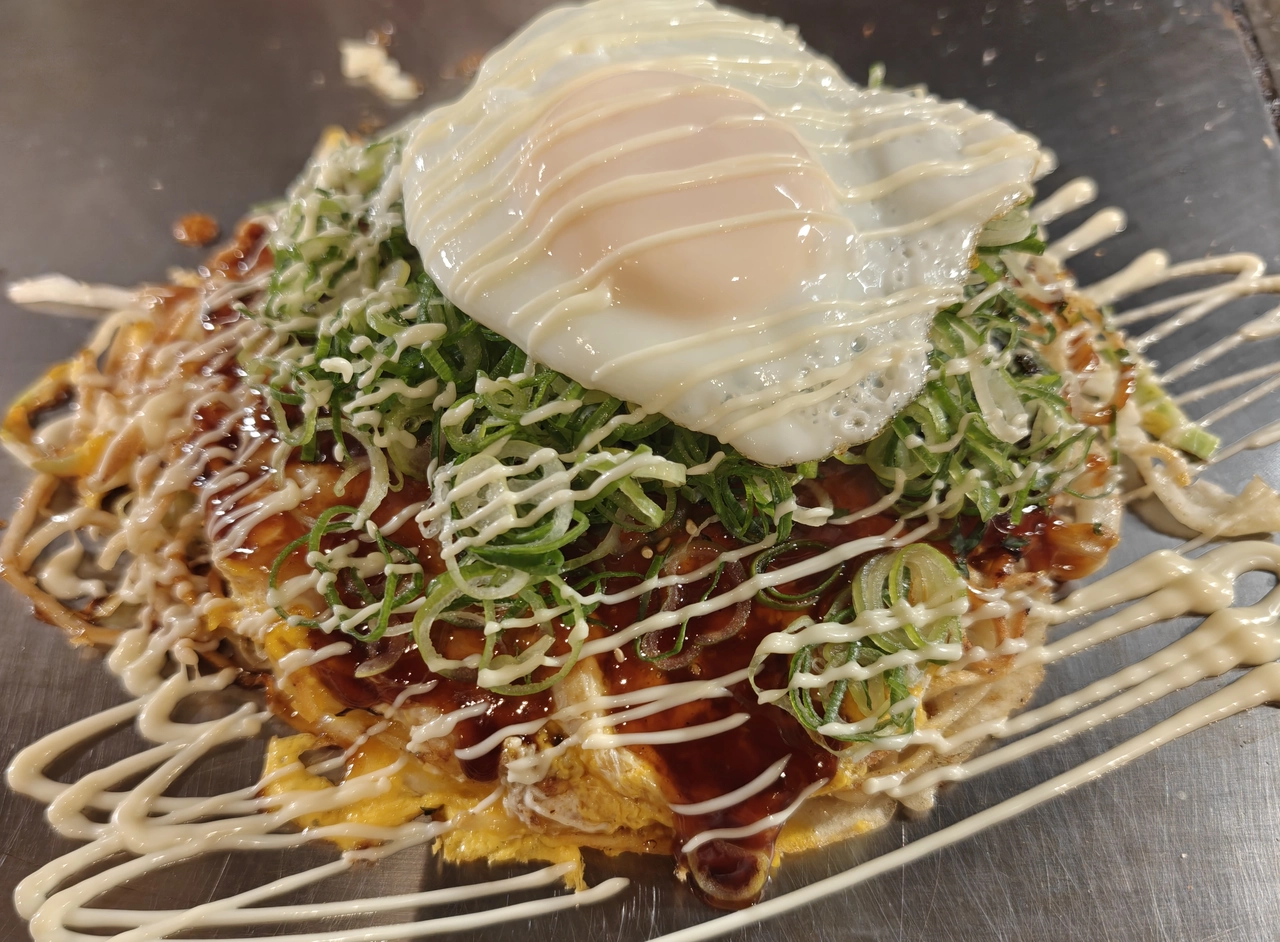
That evening, we ventured into one of Japan’s legendary game centers—also known as gesens. Video games are serious business here, and nothing proved it more than the eight-floor arcade we found ourselves in. Each floor was an overload of flashing lights, pounding music, and high concentration from professional gamers.
We stood back in awe, watching seasoned players dominate everything from Street Fighter battles to lightning-fast rhythm and dance games, and even vintage retro machines. The skill on display was next level. Some of the most popular spots to check out are GIGO (formerly SEGA Arcades), Round One, and the iconic Taito Stations scattered across the city.
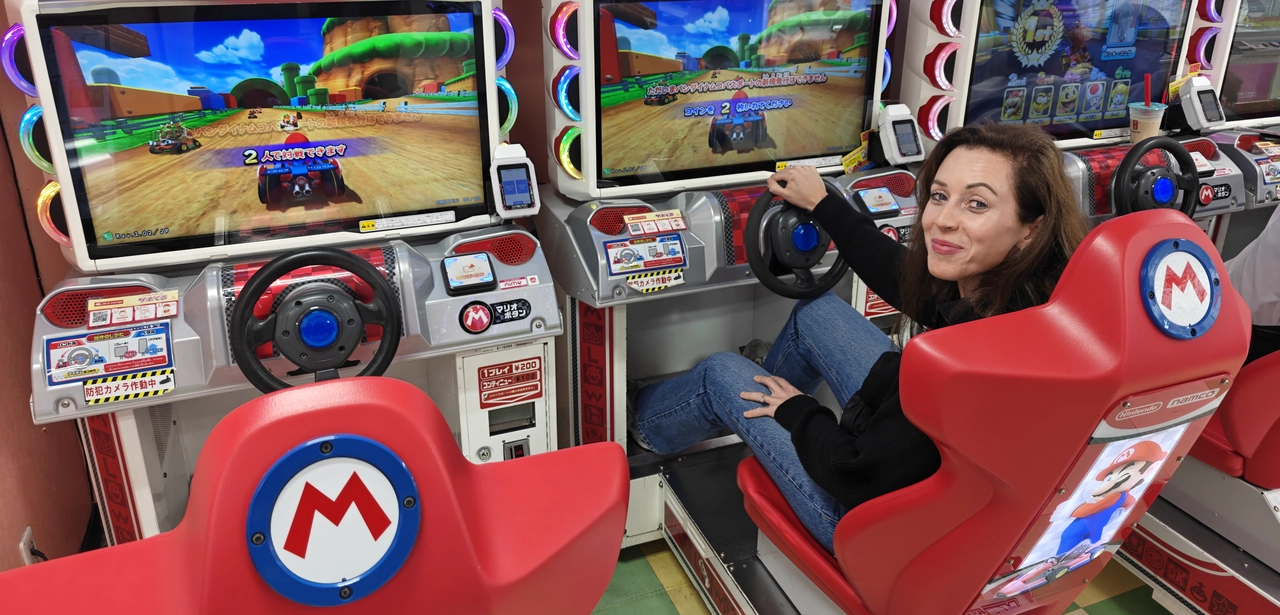
Later that evening, we squeezed into one of the tiny 6–8 person bars tucked along the narrow alleys of Golden Gai—a famous nightlife district known for its maze of atmospheric izakayas. These bars are cosy, intimate, and often themed, each with its own personality.
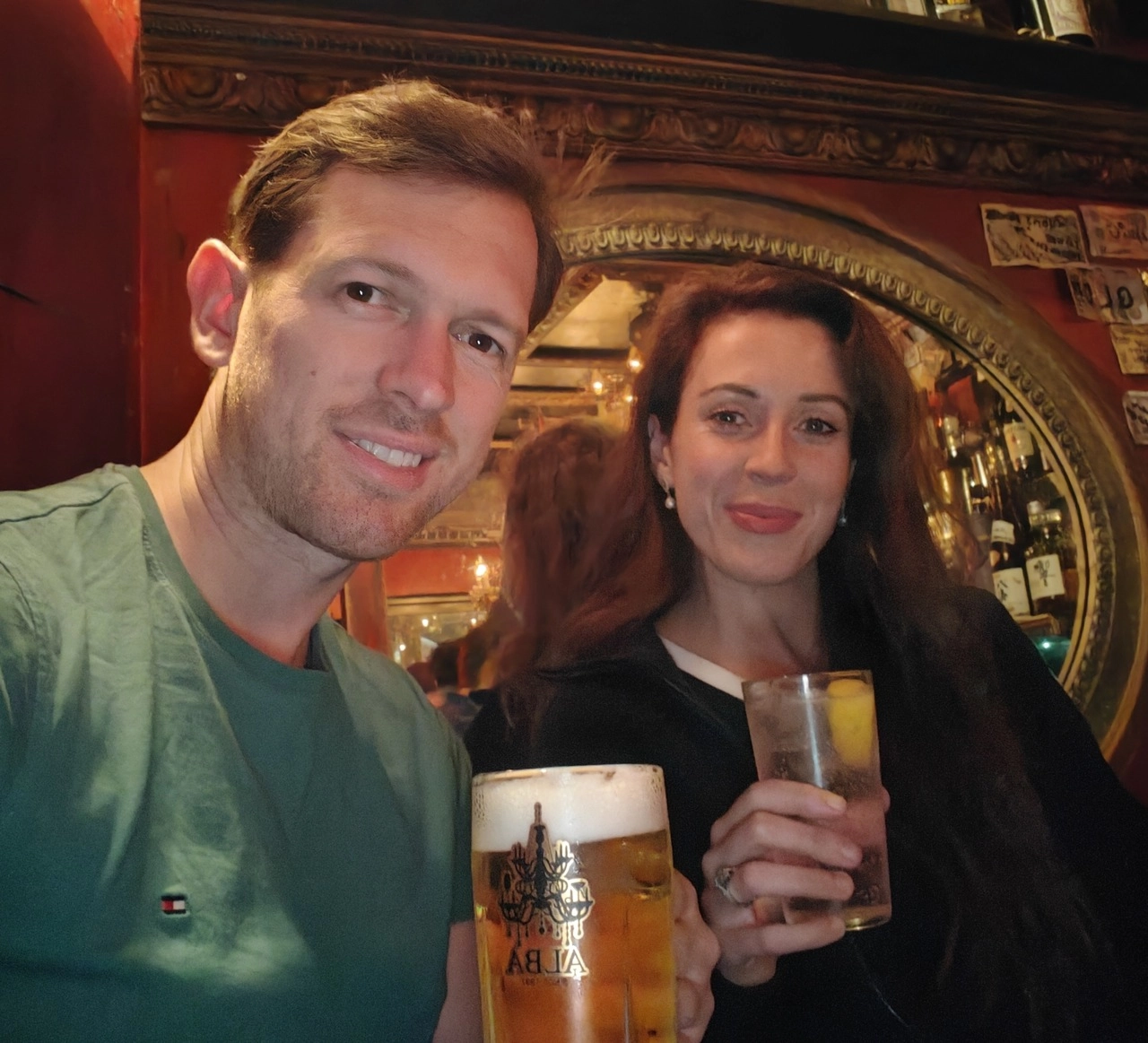
Despite their size, they’re perfect for striking up conversations with fellow travellers or friendly locals over a round of cocktails or a glass of sake. Some choose to light a cigarette, much to my dismay...
20–04–2025
The next morning, we headed to Ginza for a spot of shopping. The main street was closed off to traffic, turning it into a pedestrian paradise—Oxford Street, take note. Our first stop was the flagship Uniqlo store, and it did not disappoint.
Spanning eight floors, it featured everything from a wall showcasing the brand’s history to stations offering embroidery, custom print shirts, and even coffee. It felt more like a curated fashion experience than a high-street store. Only in Japan. Little did I know it stood for 'Unique Clothing'.

Next up was the Tokyo Skytree—a massive tower that (as the name suggests) scrapes the sky and offers panoramic views across the entire city. From the top, you can spot iconic sights like Mount Fuji in the distance and the quirky golden flame atop the Asahi Beer headquarters (also affectionately referred to as... well, just Google it).
Personally, I found Skytree a bit too commercialised—like being herded along a tourist conveyor belt. Still, it’s one of those box-ticking experiences you kind of expect in a city like Tokyo.
Later, we made a ramen convert out of my partner at Ichiran in Asakusa. Previously a ramen sceptic, she was won over by the place’s genius setup: you queue, place your order on a digital machine, and customise everything—from noodle firmness to spice level. The result? Delicious.
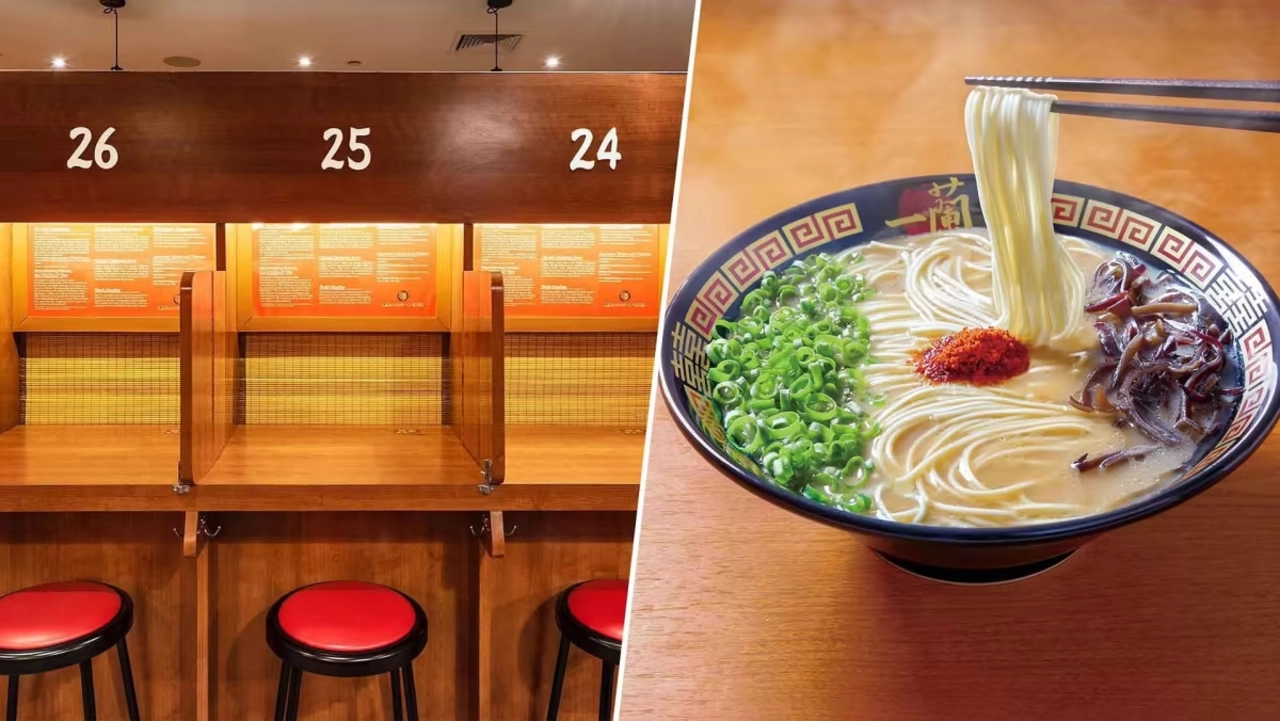
Not far from Ichiran was Senso-ji Temple—the oldest temple in Tokyo and one of its most iconic sights. The entrance is marked by a massive red lantern, weighing in at around 700 kilograms, hanging proudly beneath the Kaminarimon Gate. It’s an impressive sight and absolutely worth a visit.

Just beyond the temple lies Nakamise-dori, a lively shopping street packed with traditional snacks, souvenirs, and the occasional hidden gem. It’s a great place to take in the atmosphere and grab a few quirky keepsakes.
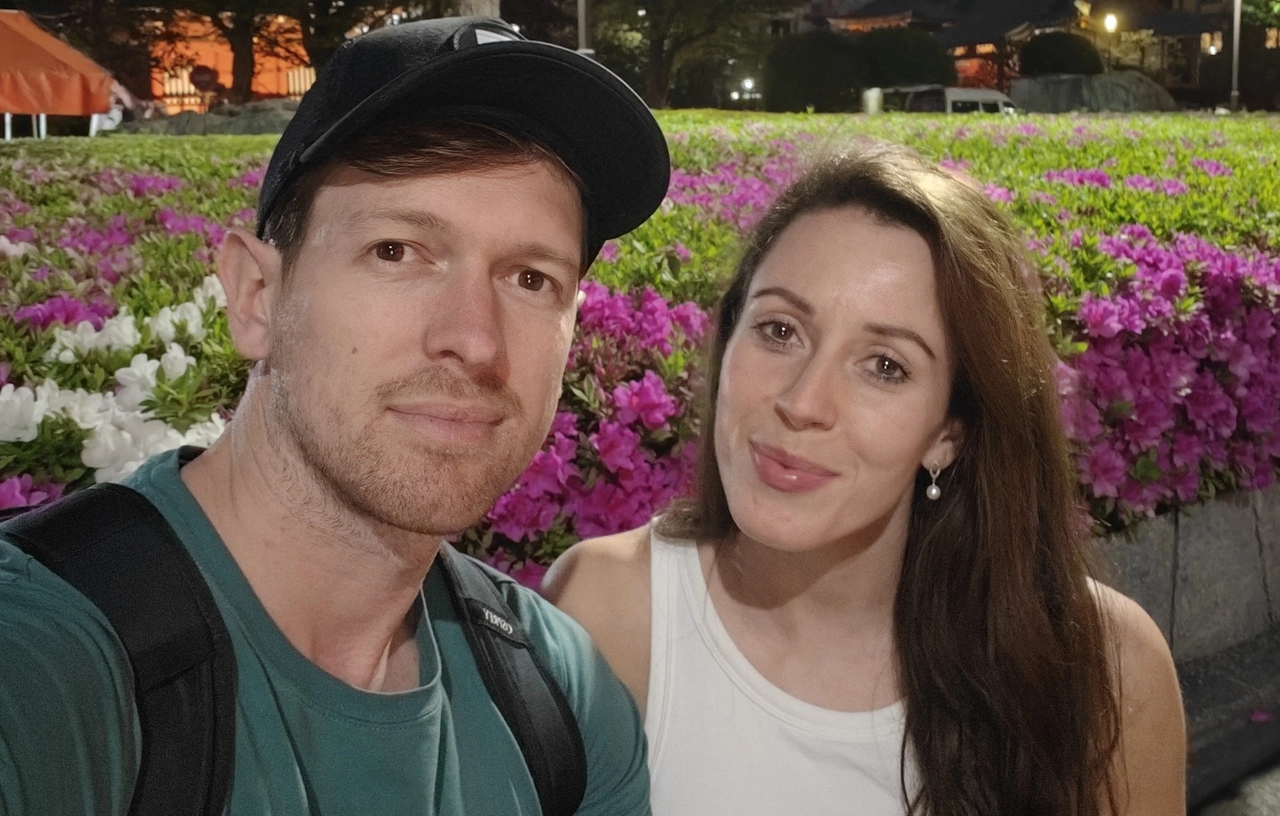
21–04–2025
Our original plan for a day trip to Nikko fell through—train tickets were sold out—so we pivoted and headed to Kamakura instead. With the sun out and temperatures rising, a coastal town felt like a no-brainer. We passed by some insane looking bakeries.
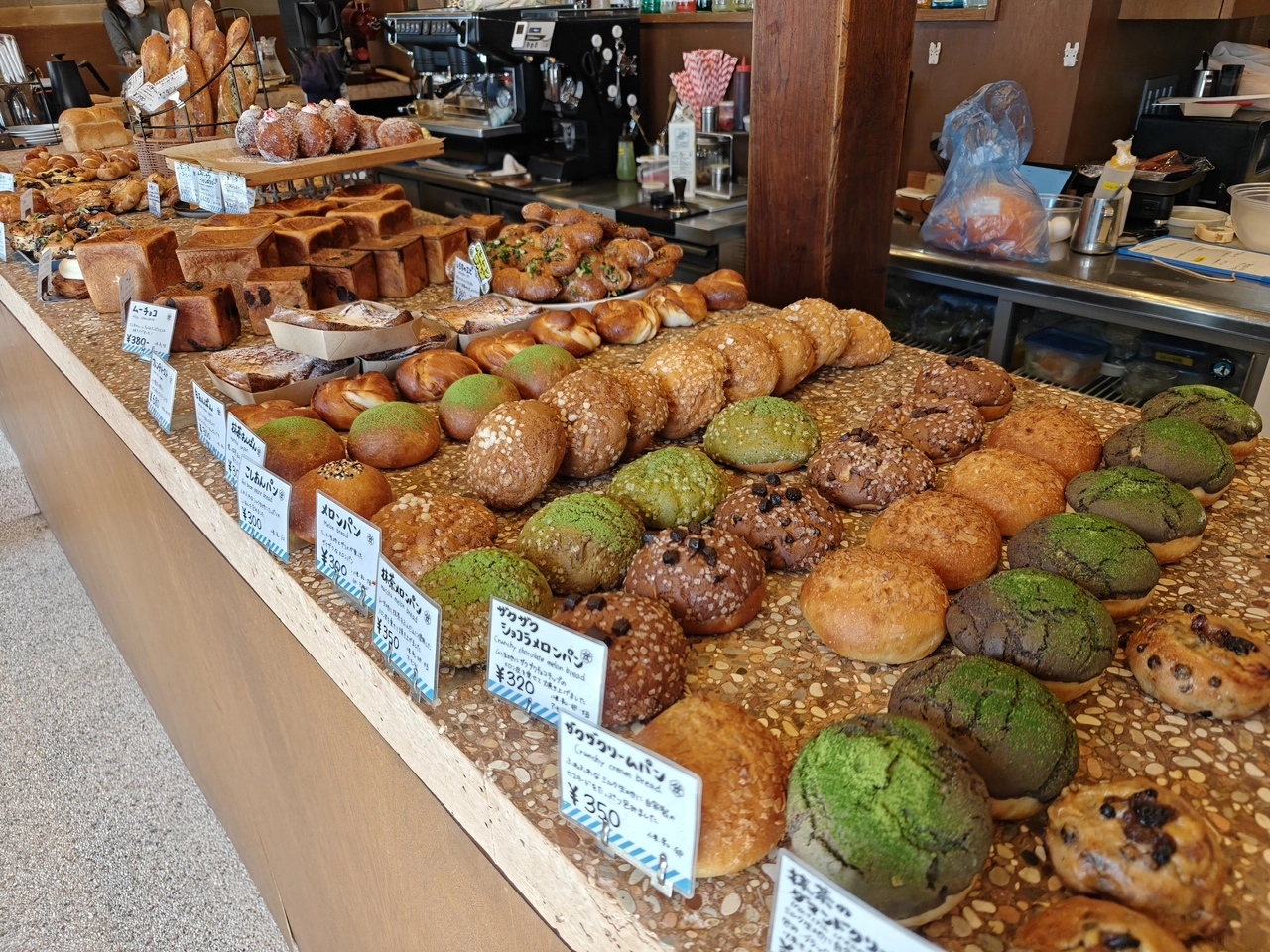
Located about an hour south of Tokyo, Kamakura is a charming seaside escape. For me, it’s Japan’s answer to Whitstable—laid-back, scenic, and full of character. We stopped for an incredible tasting menu lunch, featuring a beautifully arranged selection of Japanese dishes: pillowy pork buns, crispy potato cakes, tangy pickled vegetables, and the star of the show—melt-in-your-mouth wagyu beef.
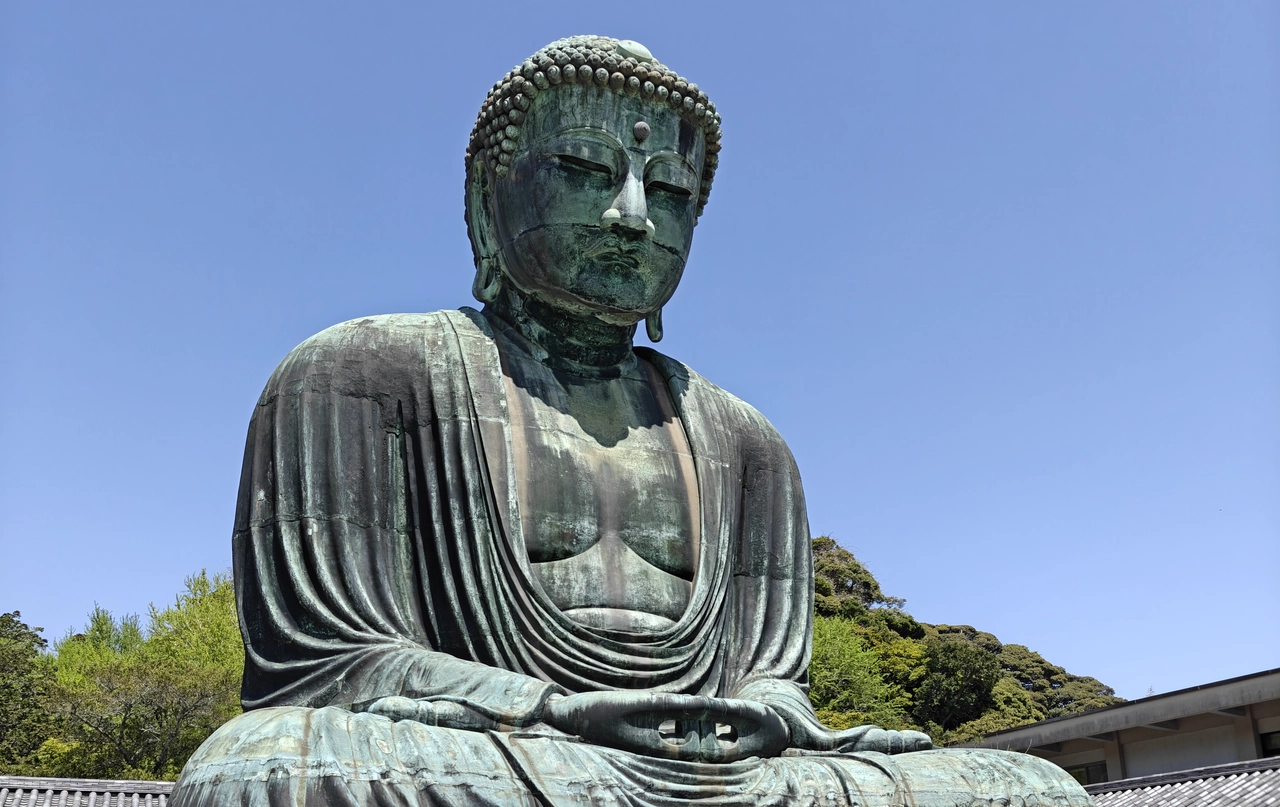
We stopped by Kotoku-in to see the famous Great Buddha towering bronze statue that’s just as impressive in person as you’d hope. After snapping a few photos, we wandered down to the beach for a stroll... though “relaxing” might not be the word for it.
Here, seagulls have been dethroned by a far more aggressive bird gang: vicious crows. At one point, we saw a woman hunched over, shielding her face with her elbows, sprinting down the beach like she’d been dropped into a scene from Resident Evil.
Adding to the tension was a large sign warning us what to do in case of a tsunami—read aloud in our heads with the dramatic words of Lochlan from the TV series White Lotus. Very calming sign. Jokes on them, I wouldn’t be outrunning anything with these recurring foot blisters...
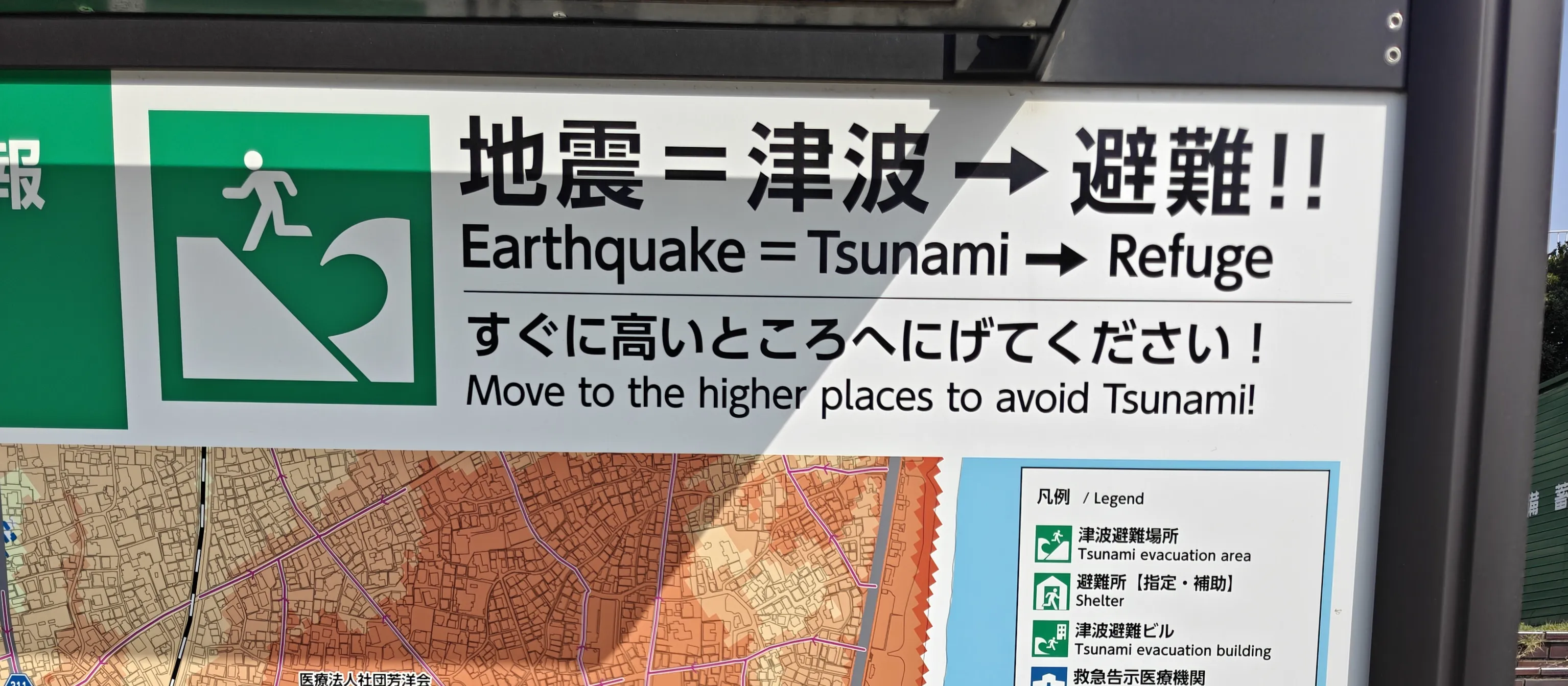
Kyoto
“In Kyoto, there is a living history in every corner.” Akira Kurosawa
22–04–2025
Next stop on our itinerary was Kyoto—Japan’s former capital for over a thousand years and a city steeped in tradition. One of our first experiences there was a stroll through Nishiki Market, a bustling stretch of food stalls and shops that seemed to go on forever.
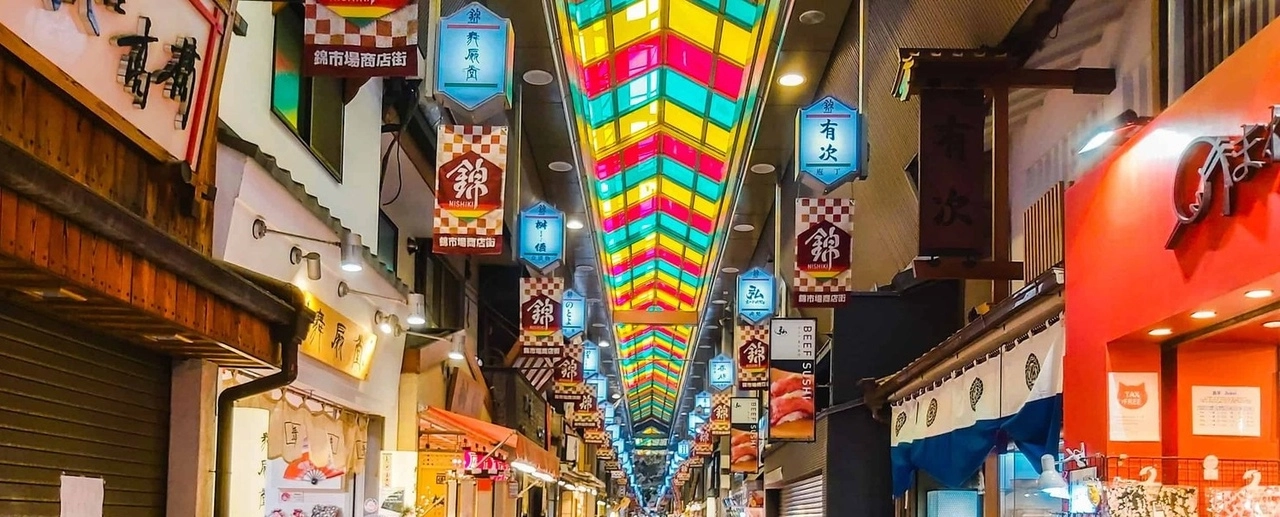
The options were endless: tempura, sizzling meat skewers, gyozas, sake, and more. We splurged on a couple of pricey—but worth it—shrimp tempuras, some juicy beef gyozas, and the standout star: curry bread. Honestly, it stole the show. The crispiness, rich katsu curry filling, and the coated sesame gave it a serious edge. Highly recommended.
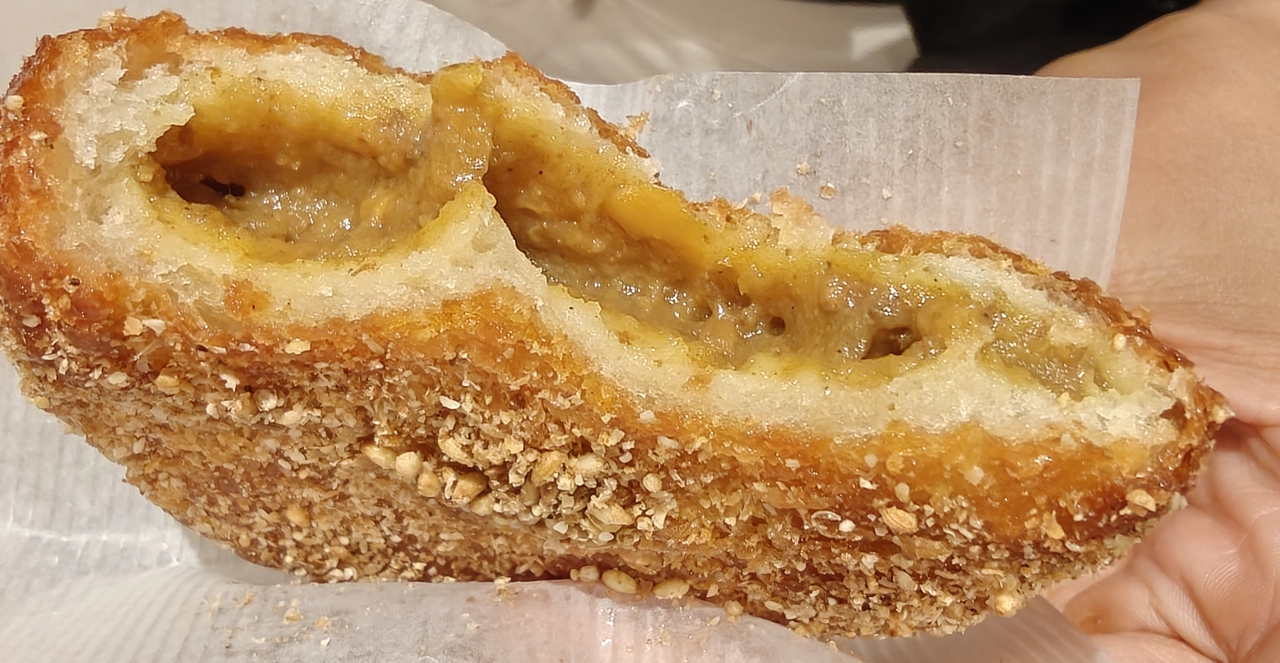
We took a long, crowded bus ride out to the northern Kyoto district of Kita, home to one of the city's most iconic landmarks: Kinkaku-ji, the famous Golden Pavilion. A designated UNESCO World Heritage Site, the temple was originally built as a retirement villa for the shogun Ashikaga Yoshimitsu, and later converted into a Zen temple.
The top two floors are covered in 0.5-micron gold leaf, making it shimmer in the sunlight like something out of a painting. It’s a popular spot, so arriving early is a smart move to beat the crowds.
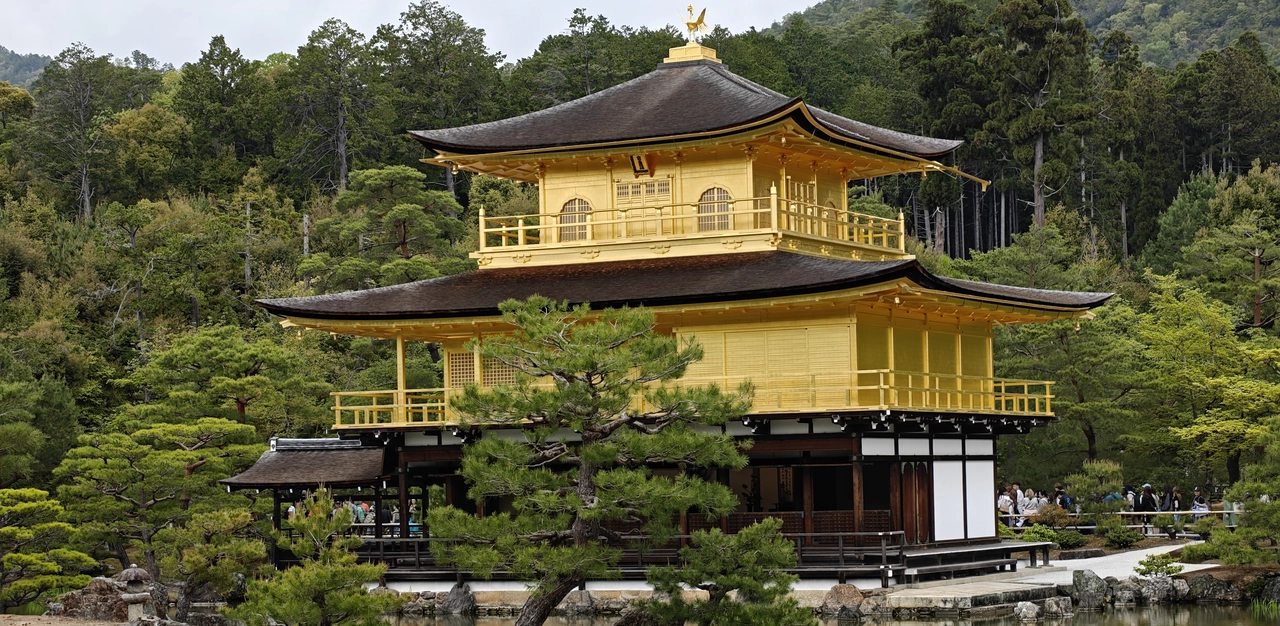
Dinner that evening took us to Katsukura, tucked away on the top floor of the Kyoto Station mall. By this point, we’d fully accepted what had become a recurring theme: if the food is good, there’s a queue. Or worse—a ticketing system. You take a number and wait, like you're about to get a blood test... or play the world’s slowest, least exciting game of bingo.
Still, I always try to keep one thing in mind: the food is always worth it. And Katsukura delivered.
23–04–2025
We took a day trip to Nara, just a 40-minute train ride from Kyoto—famous for its ancient temples, shrines, and of course, the bowing deer. Our first stop was the deer park, where we, like every other stereotypical tourist, bowed politely to a deer in front of us, hoping for a nod in return.
Some ignored us completely—probably sensing we didn’t have any snacks. Others bowed back, likely out of sympathy.
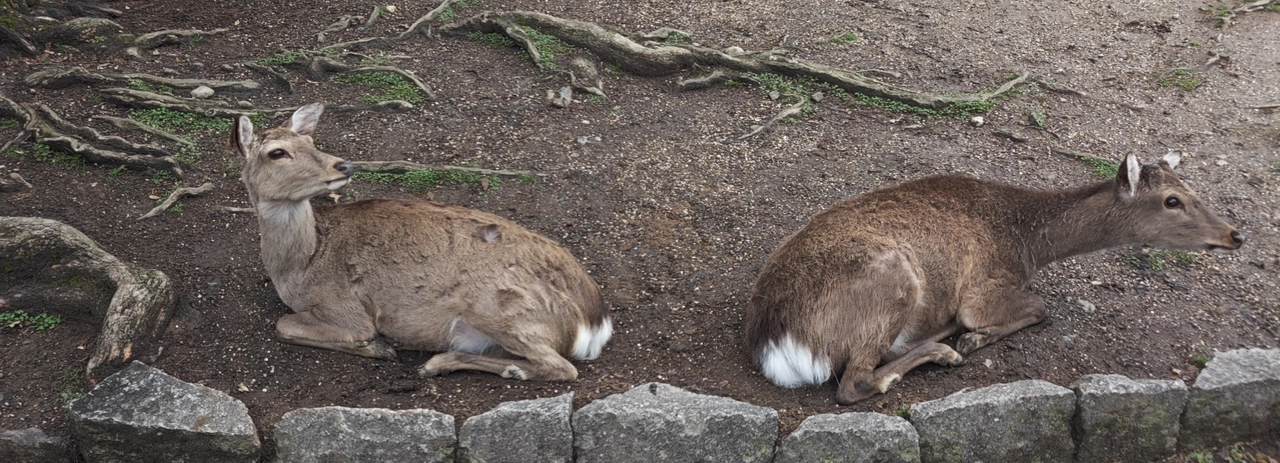
The park’s path eventually led us to Todai-ji Temple, home to the towering Great Buddha statue. Once one of the Seven Great Temples of Japan, it was commissioned by Emperor Shomu, the country’s 45th emperor, during a time when Buddhism was being promoted as a unifying force.
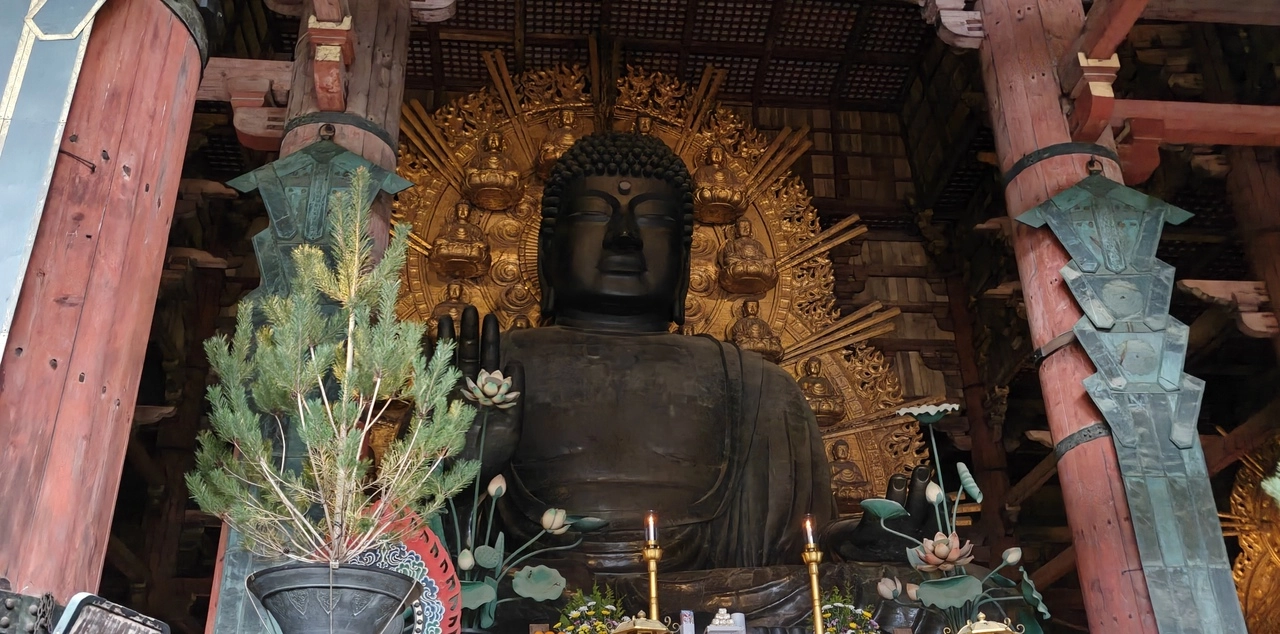
For me, Todai-ji was one of the most breathtaking sights of the entire trip—both in scale and presence. Standing before the massive Buddha, you can’t help but feel humbled.
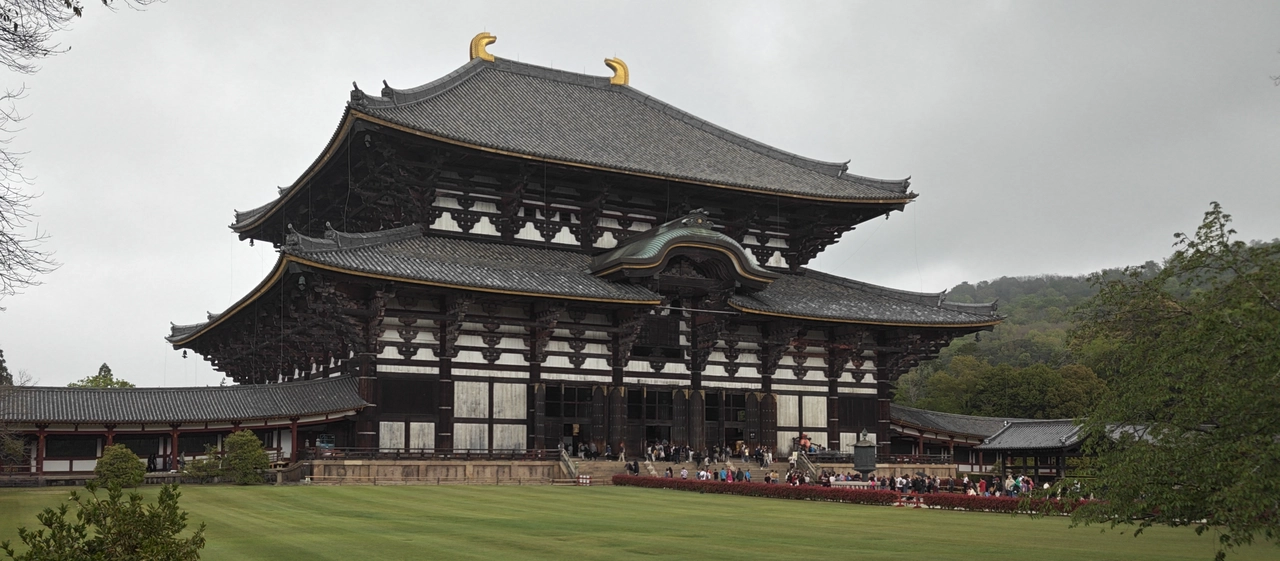
For dinner, we zipped back to Kyoto to secure a spot at a highly-rated ramen spot: Men-ya Inoichi Hanare. The place opens at 17:30, so we arrived at 16:15, smugly thinking we’d be first in line. We were third. Dammit.
This Michelin-starred ramen house absolutely lived up to the hype. The broth was rich, the noodles perfectly cooked, and the dumplings—next level.
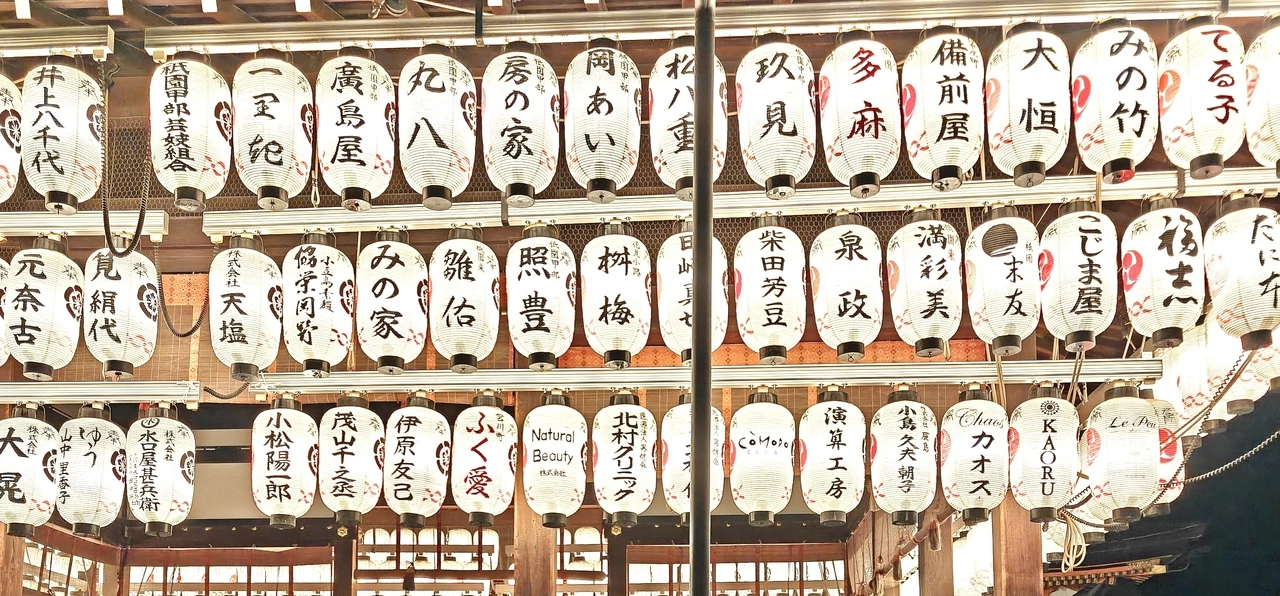
Afterwards, we took a stroll through the Higashiyama temple and gardens, not far from Gion, Kyoto’s geisha district. We wandered through narrow alleys lined with hidden clubs and tucked-away bars, many up steep stairways. Each bar averaged maybe 5 or 6 seats, much like the ones we’d seen in Tokyo. And the bartenders? Masters of their craft. Japan seriously raises the bar when it comes to cocktails.
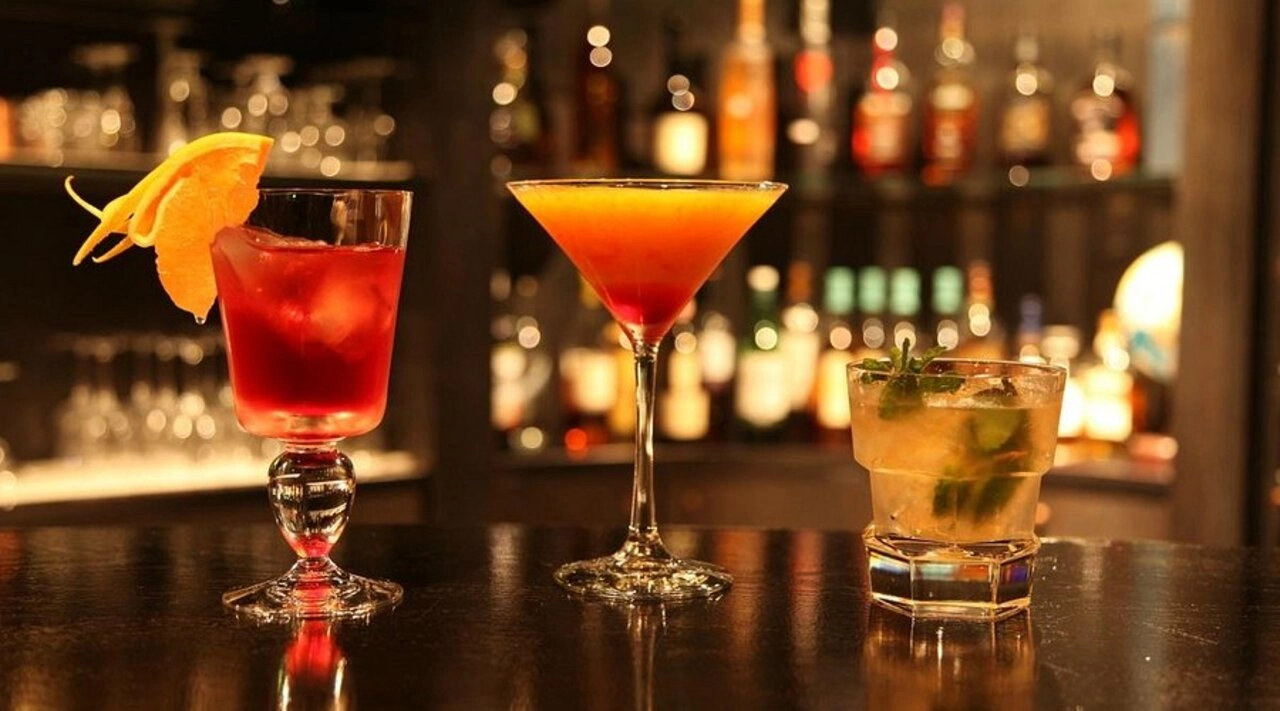
24–04–2025
We were up bright and early to beat the crowds at Fushimi Inari Taisha, the iconic Shinto shrine known for its endless trail of red Torii gates—and for being painfully packed during the day. Even 7am feels a bit late to arrive but good enough not to be impacted by crowds.
The trail winds through more than 1,000 Torii gates, taking the average visitor around 1.5 to 2.5 hours to complete. We beelined it to the top in just over an hour, fuelled by ramen from the night before.
Each gate is actually donated by a Japanese business, with the name of the sponsor engraved on the back, something we found fascinating. Along the way, fox statues stand watch, known in folklore as the messengers and guardians of Inari, the deity of rice, fertility, and prosperity.
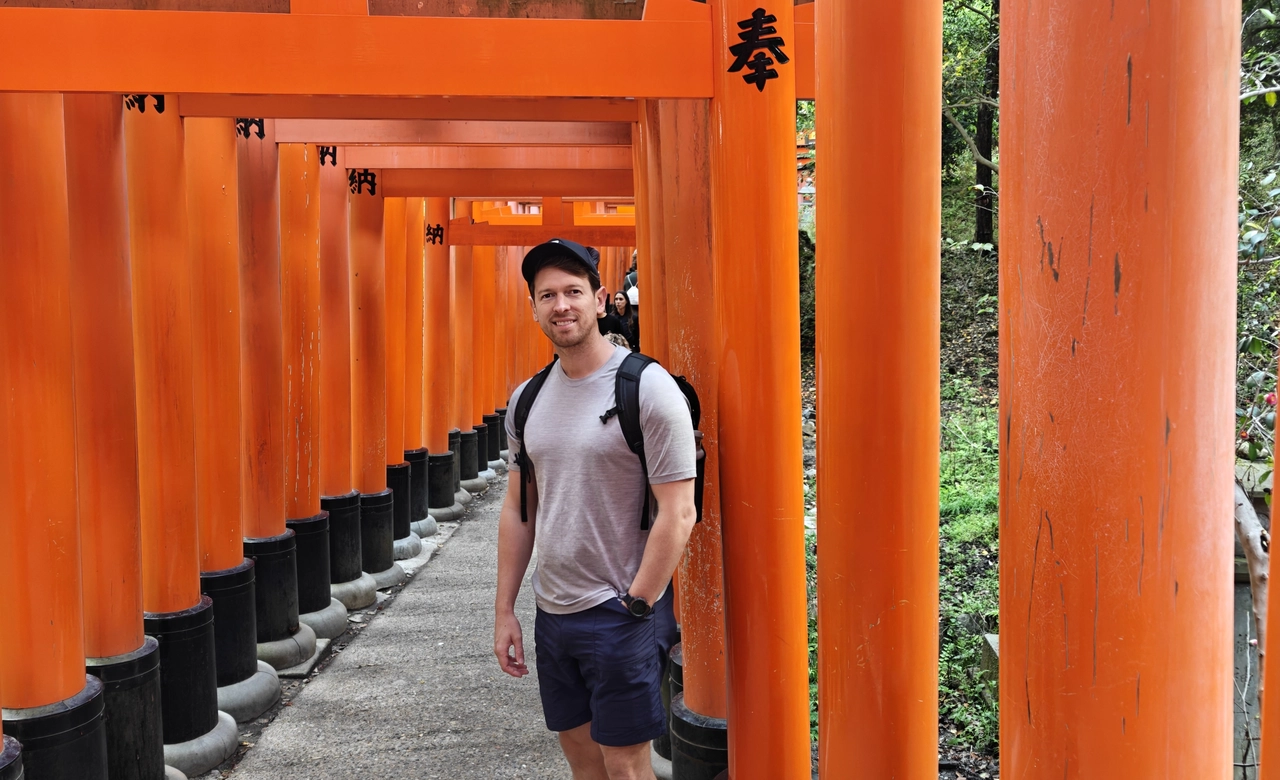
For lunch, we headed back to Gion in Kyoto to try another popular ramen spot: Duck Gion Noodles. The branding was clever and minimalist—just a duck and a bowl of ramen emoji on the shop front and throughout the menu. At first, I thought, “What a great idea!”, until I found myself having to ask what a few of the icons actually meant...
The food was tasty, though my dry dish was served cold, which caught me off guard. In hindsight, I wish I’d gone for the classic ramen instead. Still, no regrets—it was a solid meal.
After weighing up a trip to the bamboo forest in Arashiyama, we decided instead to visit Nijo Castle—and it turned out to be a solid choice. Built in 1603, the castle served as the residence of Tokugawa Ieyasu, the first shogun of the Edo period.
Touring the palace interiors was a real highlight. We wandered through room after room decorated with tiger murals, tree paintings, and lifelike cross-legged models of the shogun and his guests. The whole experience felt like stepping straight into an episode of Shōgun - minus the political tension and sword fights.
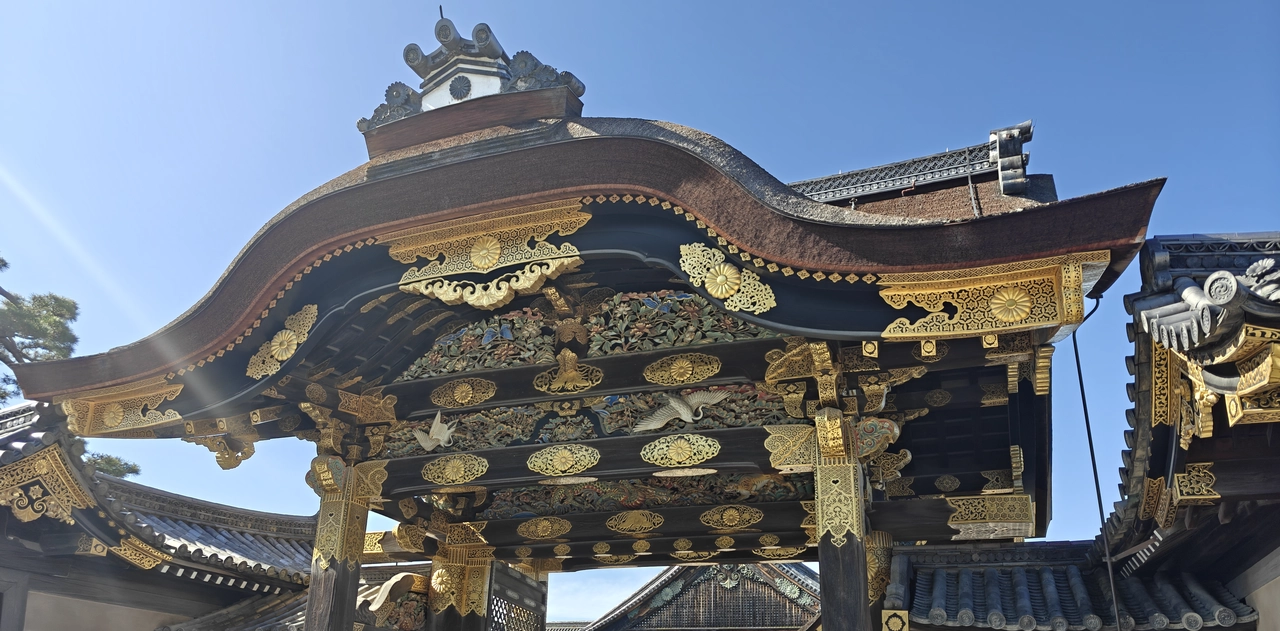
Osaka
"The motto of Osaka is 'kuidaore', which means 'eat yourself broke.' Any city where the people are willing to eat themselves into poverty is a place where food is taken seriously." insideosaka.com
25–04–2025
Osaka was the third stop on our trip. While the city has a lot to offer, we quickly learned that its transport system can be a bit of a maze—multiple layers of train lines and underground passages often threw Google Maps into a spin, which was slightly alarming given how much we relied on it.
Our first food stop was one of the city’s many vibrant markets, where we grabbed some gyozas. Though originally from northern China, where they’re usually boiled and made with thicker wrappers, the Japanese version is pan-fried, crispier, and lighter—an easy win in our book.
We also made a point to visit the well-known ‘A Happy Pancake’ café. Luckily, we’d made a reservation—there was a queue spilling out the door. The pancakes? Fluffy, indulgent, and absolutely worth the hype.

We wandered through the famously chaotic Dotonbori district—a neon-soaked hotspot packed with students, salarymen, and tourists all jostling for space among the clubs, bars, and restaurants. It gave off serious Times Square vibes, just with more street food and fewer Elmos.
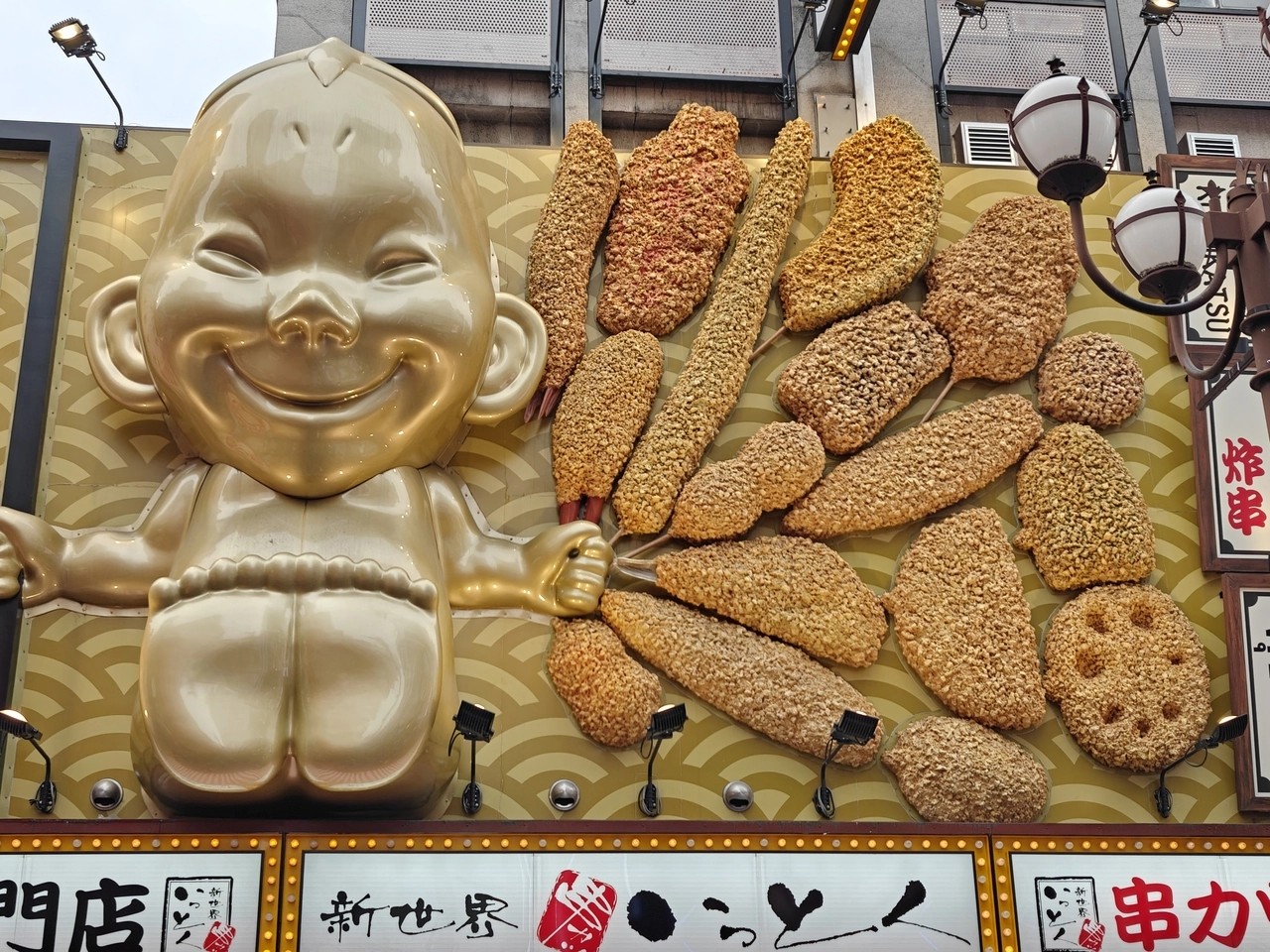
Naturally, we had to try the local specialty: Takoyaki, or octopus balls. I made the rookie mistake of biting into one too soon, thinking it had cooled down. Big mistake. The inside was molten lava, and I was 1 second away from spitting it out to save my tongue. Lesson learned.
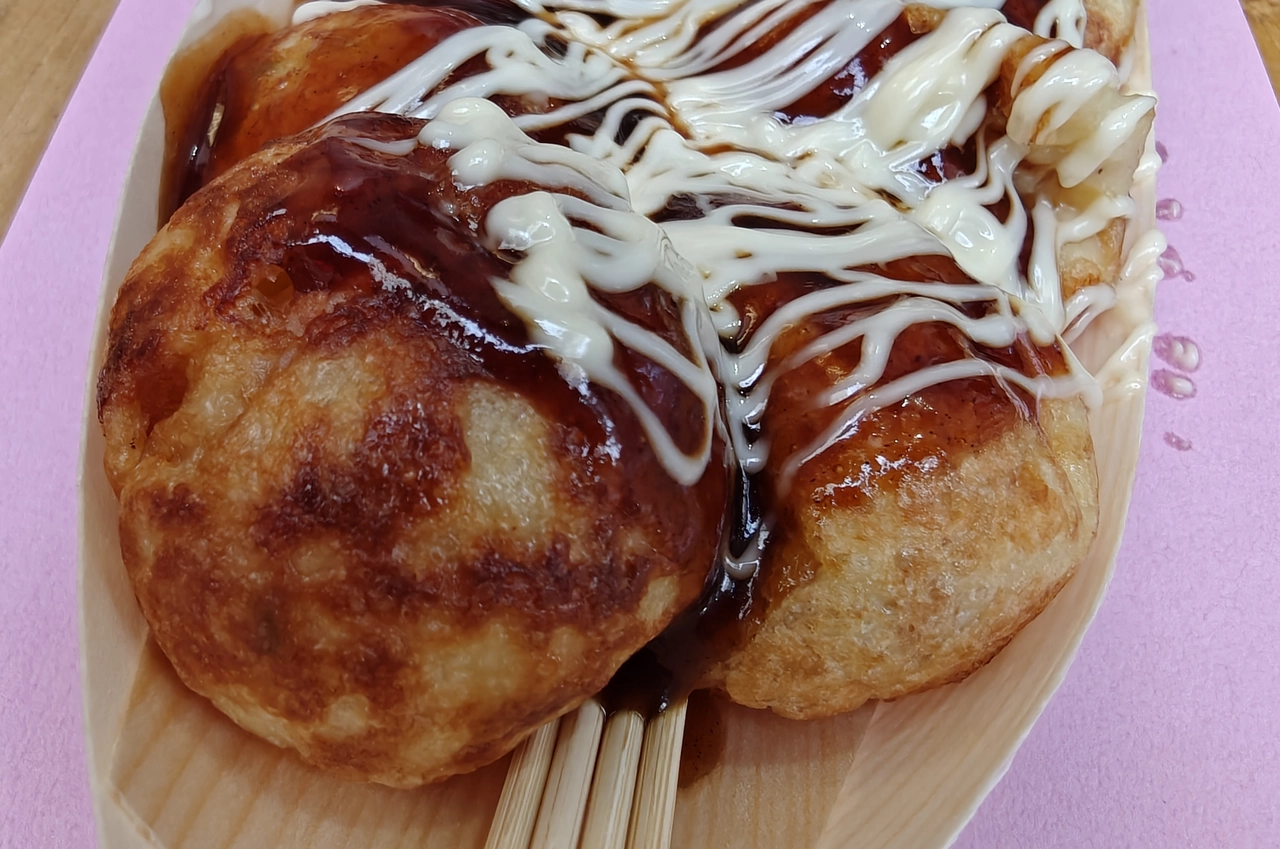
We made a stop at a micro pig café, where you’re assigned a cushion on the floor and the pigs are let loose to roam freely. They instinctively gravitated toward smiling humans, happily plonking themselves in your lap with a few content oinks before settling into a cosy position—unless, of course, they were stacked on by another pig or gently forklifted off by a more assertive one.
That evening, marked our first real moment of respite, so I made use of the public onsen on the top floor of our hotel in Umeda. Traditionally, these Japanese baths are heated by natural hot springs—and, as I discovered at the last minute, strictly nude. That was surprise number one.
Surprise number two came in the form of the shower stations: a small plastic stool, a mirror at face level, and a bucket—like some surreal, self-critical spa setup. It was... humbling. Let’s just say I admire the cultural openness, but I’m not quite built for that level of self-reflection.
26–04–2025
We had earmarked a day trip to Himeji, just an hour away on the JR railway. On the way back, we planned a stop in Kobe, famous for its legendary wagyu beef—so we could make the most of the journey.
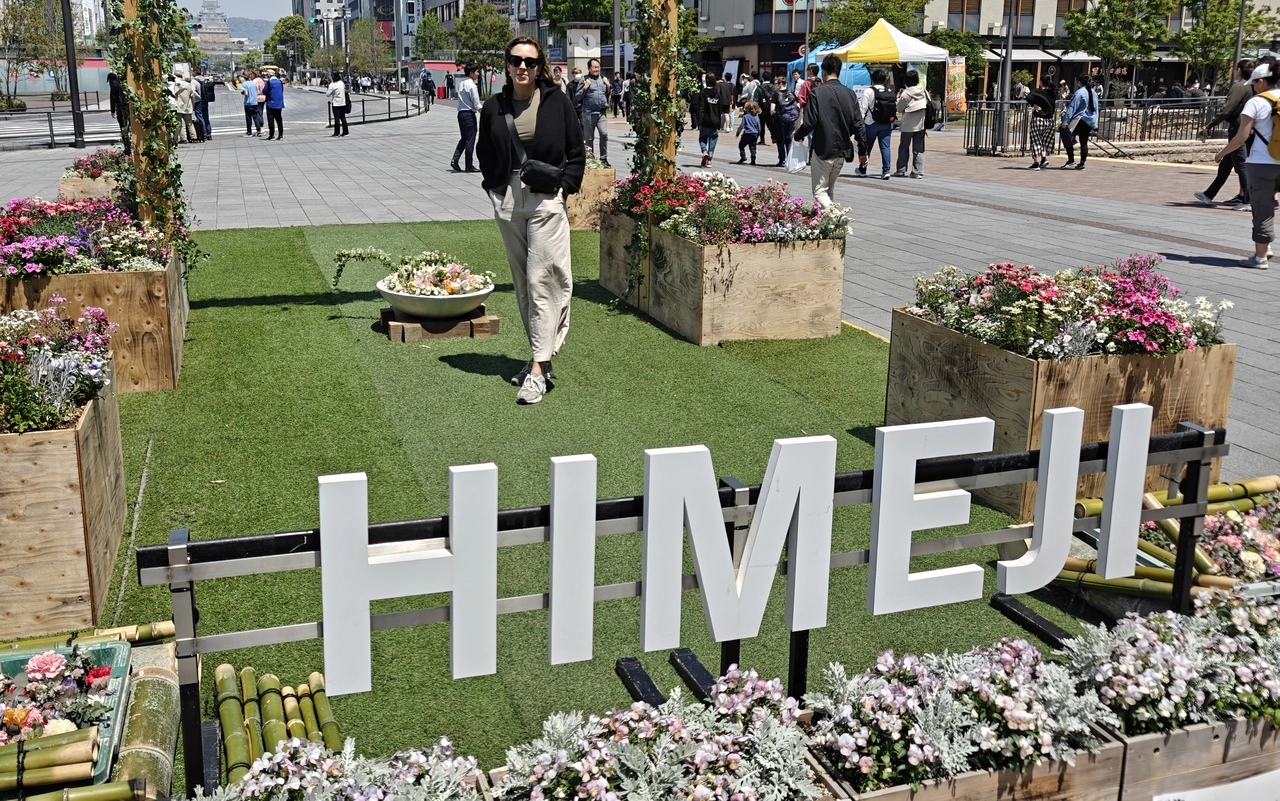
Upon arriving in Himeji, we grabbed a quick breakfast nearby and then set off along the main road leading to the city’s crown jewel: Himeji Castle, visible in the distance like something out of a storybook. It’s an iconic landmark, famously featured in films like the James Bond classic You Only Live Twice, and it has genuinely stood the test of time—both structurally and cinematically.
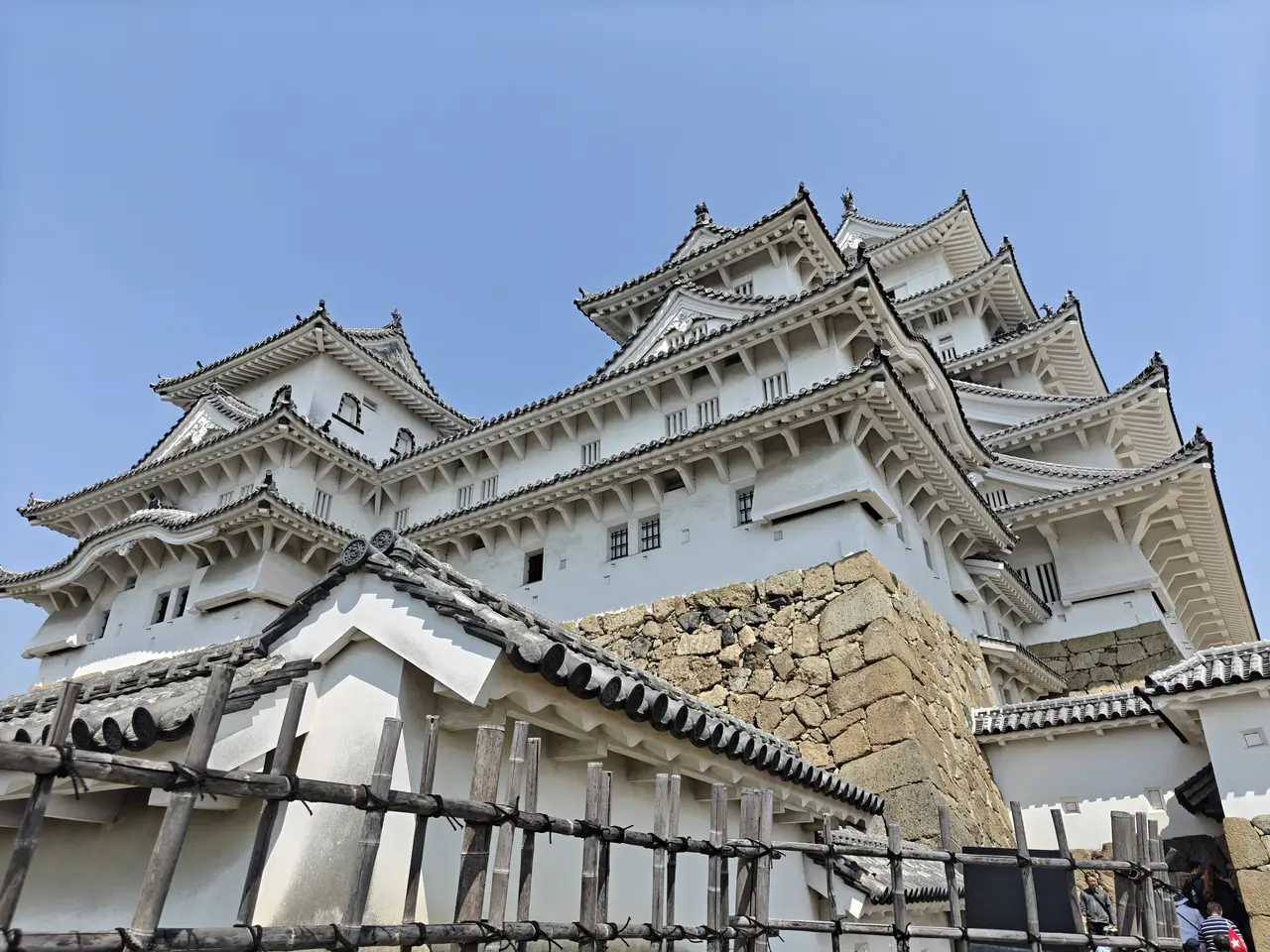

After experiencing the beautiful Japanese gardens nearby the castle "Koko-en" and crossing the stone bridges to peer down at the variety of Koi fish, we decided it was time to head to Kobe.
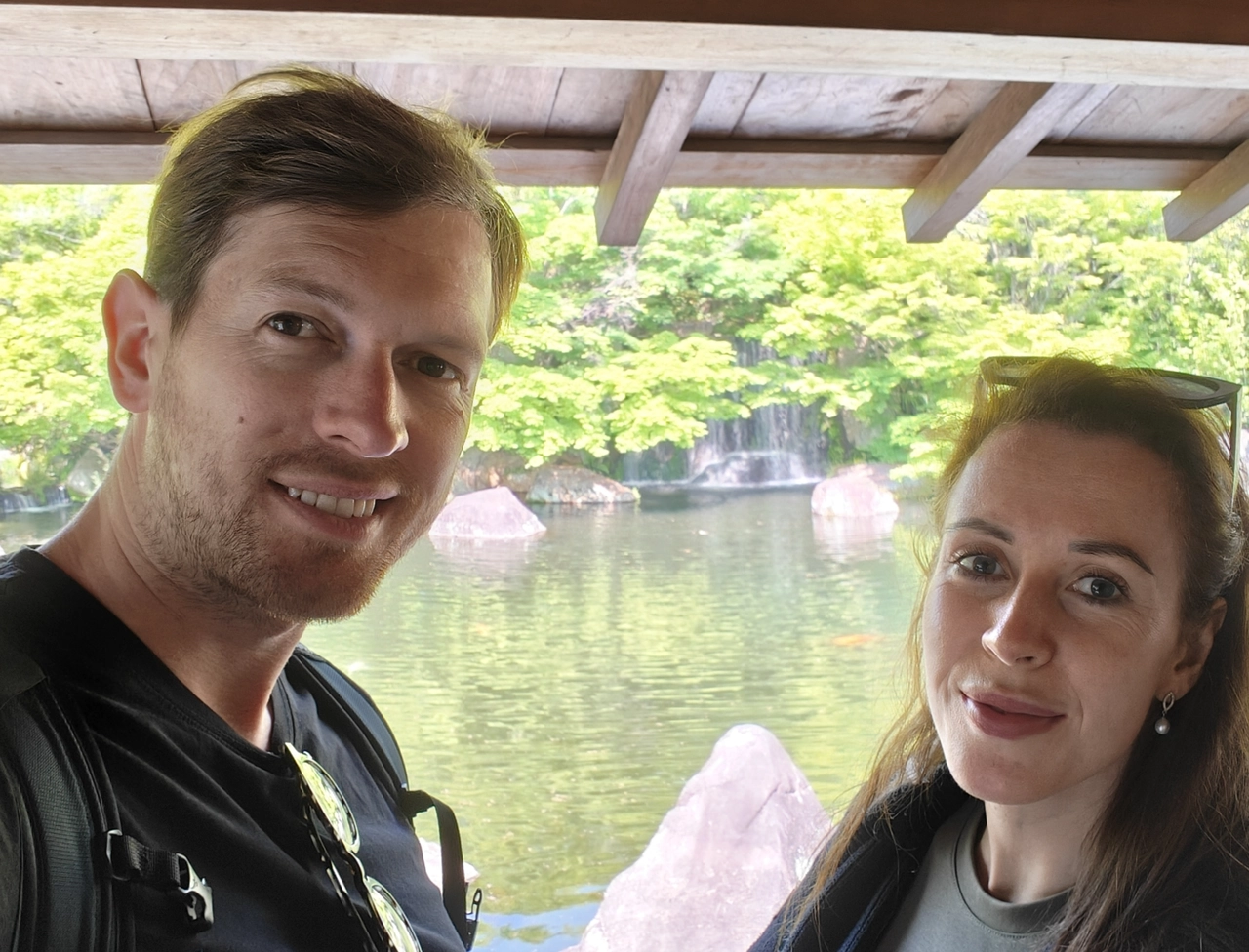
Kobe—one of the first Japanese cities to open to Western trade in the 19th century—has more than a few claims to fame. It’s credited with inventing karaoke, and more famously, it's the birthplace of Kobe beef: a prized form of Wagyu known for its exquisite marbling and rich flavour.
We had a meal at Steakland Kobe, where a teppanyaki chef cooks in front of your table, expertly searing the Kobe beef to perfection while decorating the plate with shiitake mushrooms, bamboo shoots, and a selection of side dishes designed to cleanse the palate between bites.
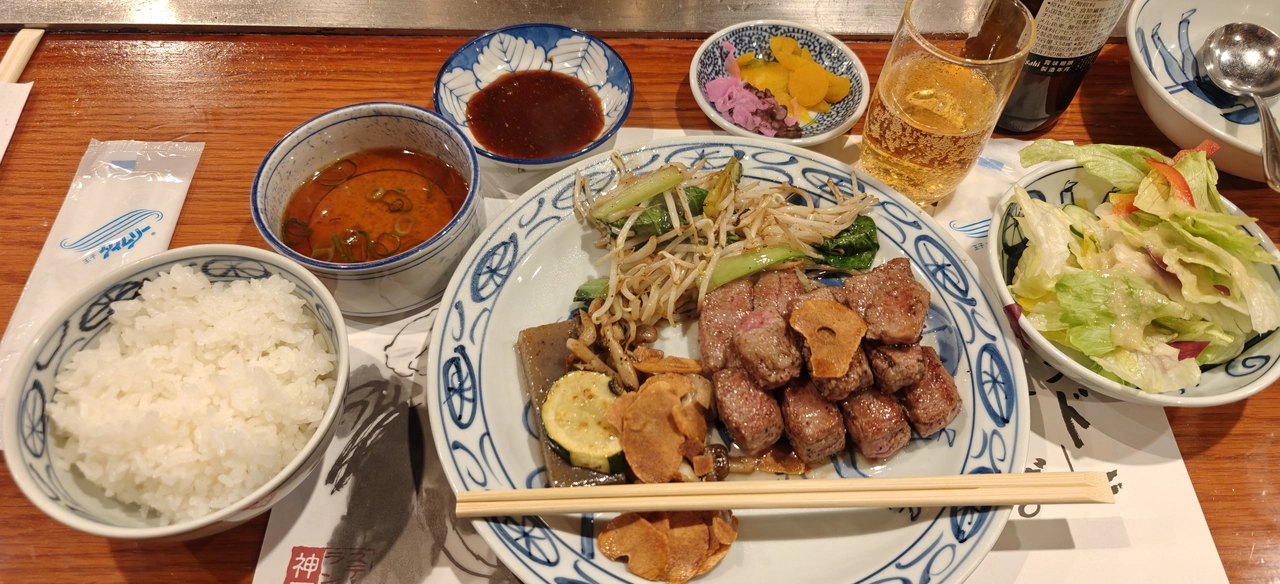
27–04–2025
On our last day in Osaka, we took a walk over to the city’s iconic landmark; Osaka Castle. Pro tip: book your ticket online to skip the often long queues. We made our way up the castle's interior stairs, reading about the life and legacy of Toyotomi Hideyoshi, the legendary figure who unified Japan during the 16th century.
At the top, we were rewarded with a panoramic view of the city. While the inside of the castle felt more like a modern museum than a preserved historical site (which made it feel a little less authentic to me). The exterior made up for it, and was perfect for photos.

That evening, we stayed out late exploring Osaka’s bar scene—a move our younger selves would’ve been proud of. One standout was Bar Nayuta, a hidden gem that took some effort (and a few wrong turns) to find—but totally worth it in the end.
The bar was packed, and part of its charm is that there’s no menu. Instead, the bartender simply asks what kind of drink you like and crafts something tailored to your taste. They didn’t disappoint.
Hiroshima
"Hiroshima teaches us that peace is not merely the absence of war, but the triumph of hope over destruction." — Daisaku Ikeda
28–04–2025
Our next stop: Hiroshima. While it might not be as popular with tourists as Tokyo, Kyoto or Osaka, it holds a profound significance and stands as a powerful reminder of the past. On our first day, we visited the Peace Memorial Park, a preserved area dedicated to the memory of the atomic bombing.
We were lucky enough to be shown around by a friendly volunteer guide named Akey. Sweet, knowledgeable, and surprisingly quick on her feet. Despite my long legs, I found myself struggling to keep pace as she zipped from one stop-off point to the next.

The tour took us to several key landmarks within the Peace Memorial Park, each carrying the weight of history. The park is dedicated to the legacy of Hiroshima—the first city in the world to suffer a nuclear attack at the end of World War II—and honours the memory of the more than 140,000 lives lost, both directly and indirectly.
It’s a sobering place, but also one of reflection, resilience, and hope.
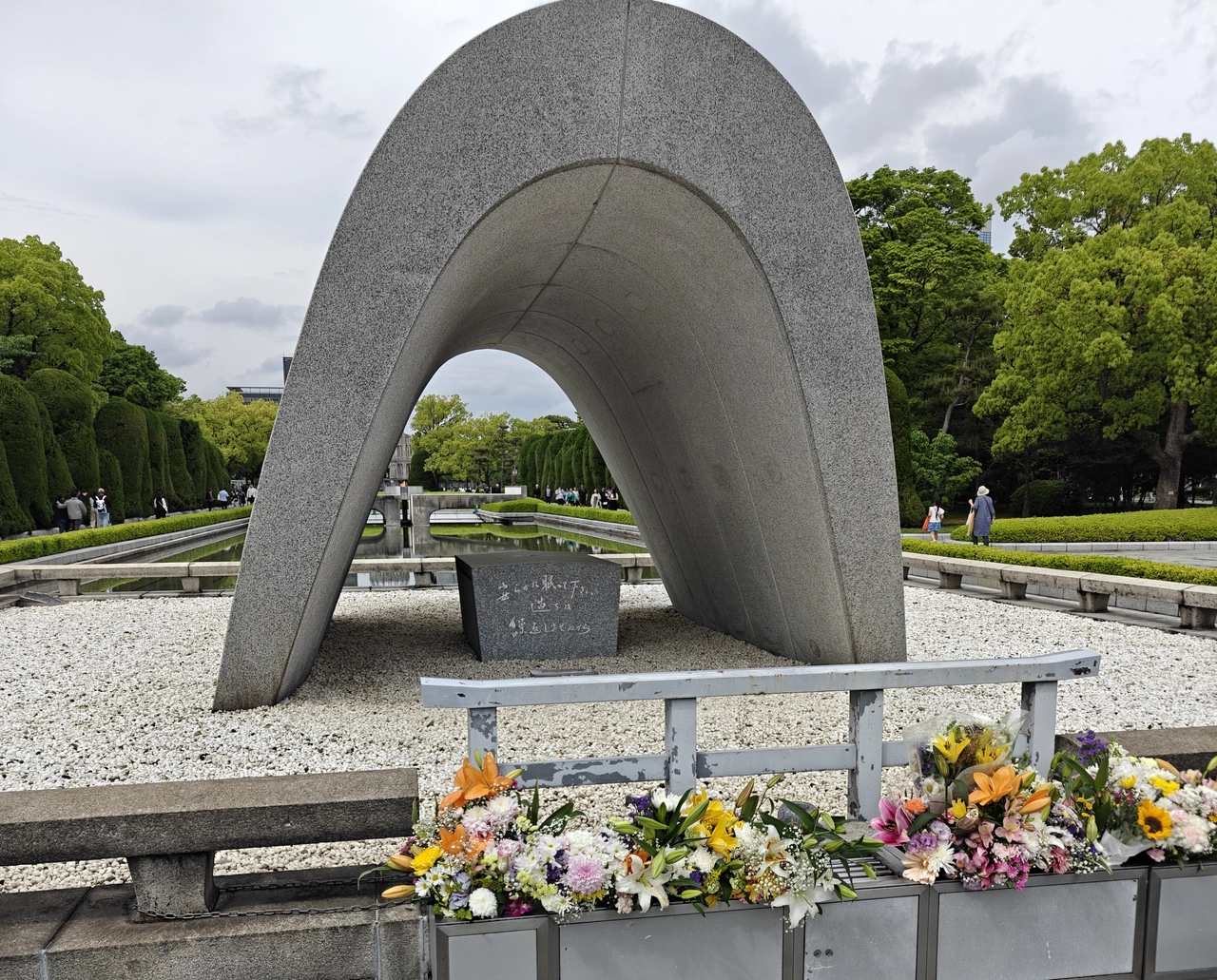
One stop on the tour was the Rest House, where Eizo Nomura survived the bombing purely by chance. On that morning, he had gone down into the basement to collect some papers that would normally be on his desk, an ordinary task that ultimately saved his life, as the concrete roof shielded him from the blast. Remarkably, he lived well into his 80s. Today, the basement is open to the public—a small, somber space that quietly tells one of the few survival stories from so close to the hypocenter.
We also visited the Children’s Peace Monument, a striking statue of a girl with outstretched arms, crowned by a folded paper crane. It honours Sadako Sasaki, a young girl who died from radiation-related illness after the bombing. In her memory, she folded over 1,000 paper cranes, and to this day, millions more are made and sent from around the world to the monument as a symbol of peace and hope.
Then there’s the haunting silhouette of the A-Bomb Dome, a skeletal ruin that stood closest to the hypocenter of the nuclear explosion. Though partially destroyed, it remained standing. In the years that followed, there was debate over whether to demolish it or preserve it. In the end, it was kept as a stark and solemn reminder, a symbol of resilience and a pledge for peace.
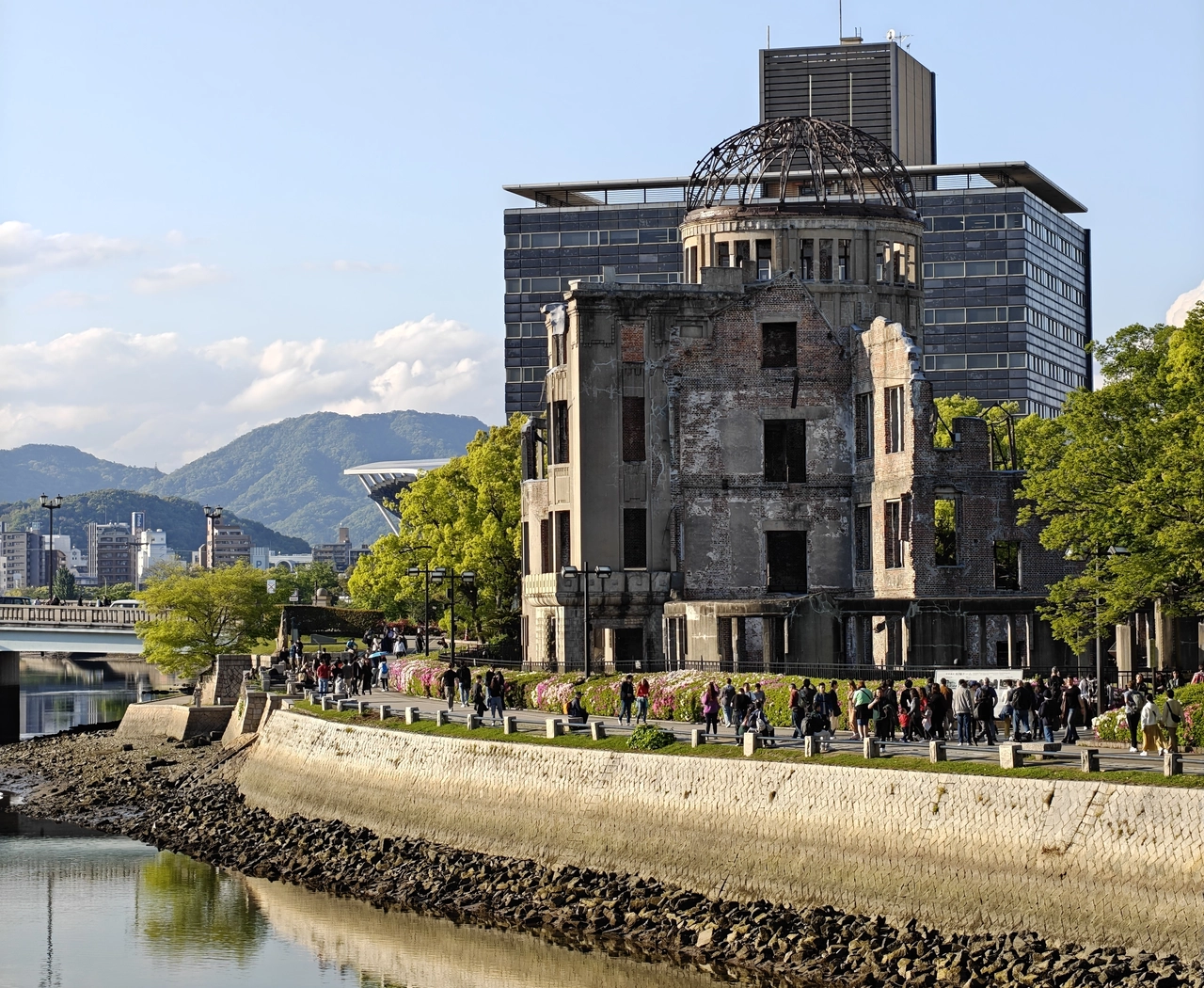
29–04–2025
From Hiroshima, there’s a ferry service that runs directly between the Peace Memorial Park and Miyajima Island, a convenient option for many visitors. We, however, opted for the longer but cheaper route, taking the streetcar through the city followed by a local ferry.
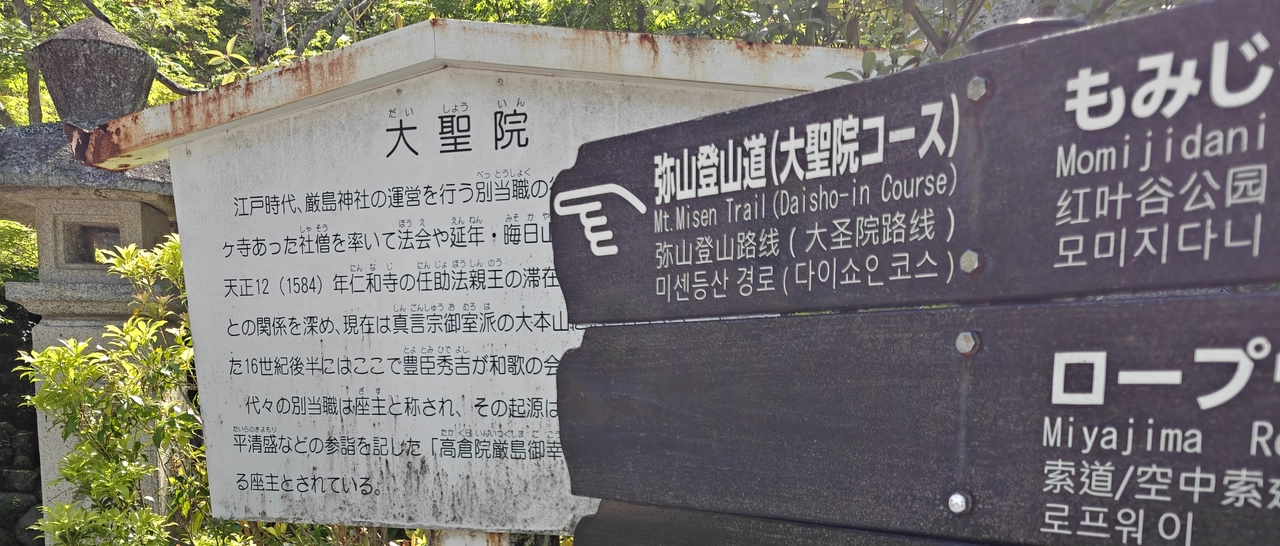
On Miyajima Island, one of the main attractions is the steep ascent to Mount Misen, which rises to about 550 metres. The trail involves a challenging climb of roughly 2,000 steps—a solid leg workout, to say the least. There is a cable car (ropeway) option for those who prefer a lift, but the queue was long and winding, so we opted for the hike instead.
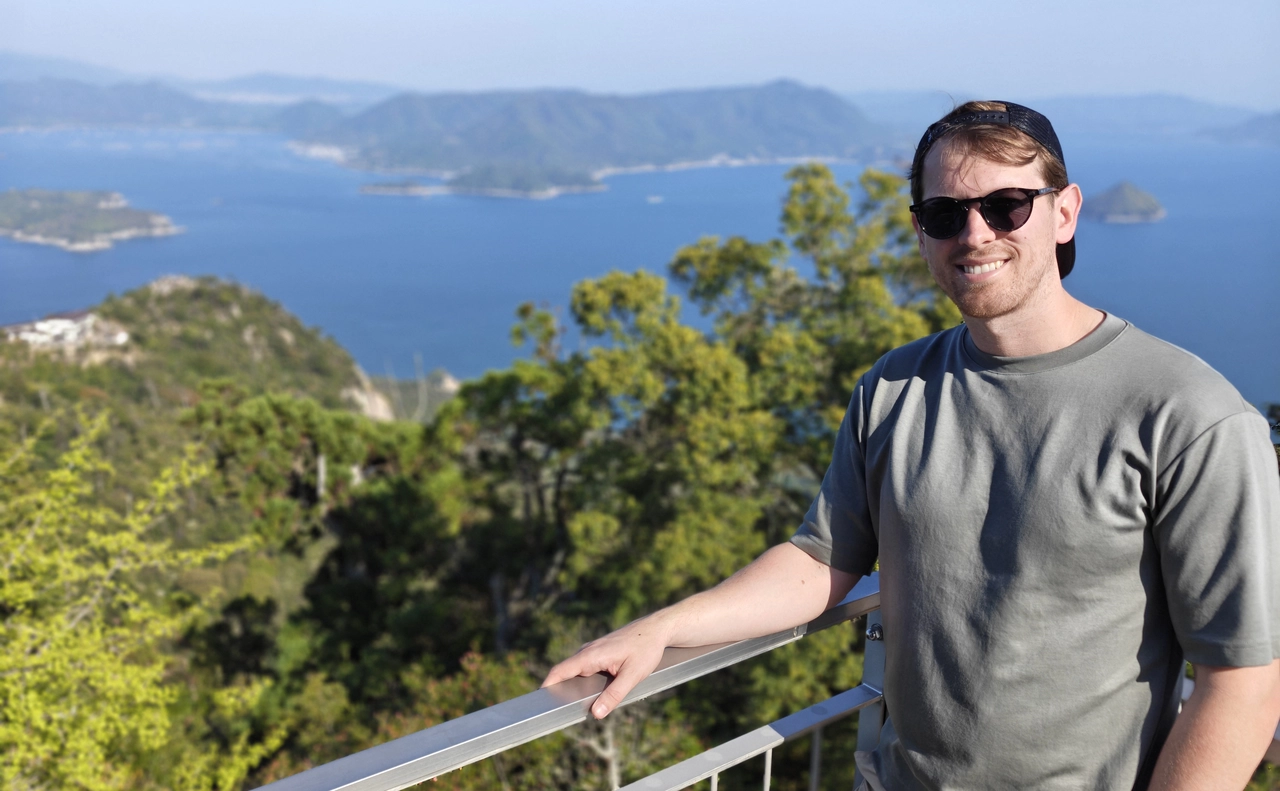
The hike up was, as expected, mostly steep stone steps, with the occasional stretch of flat ground offering a moment to catch our breath. At one point, we passed a massive boulder jutting out along the path. I couldn’t help but feel like I was about to get swept up in a boulder chase straight out of Crash Bandicoot. All it needed was the music and a few crates to smash.
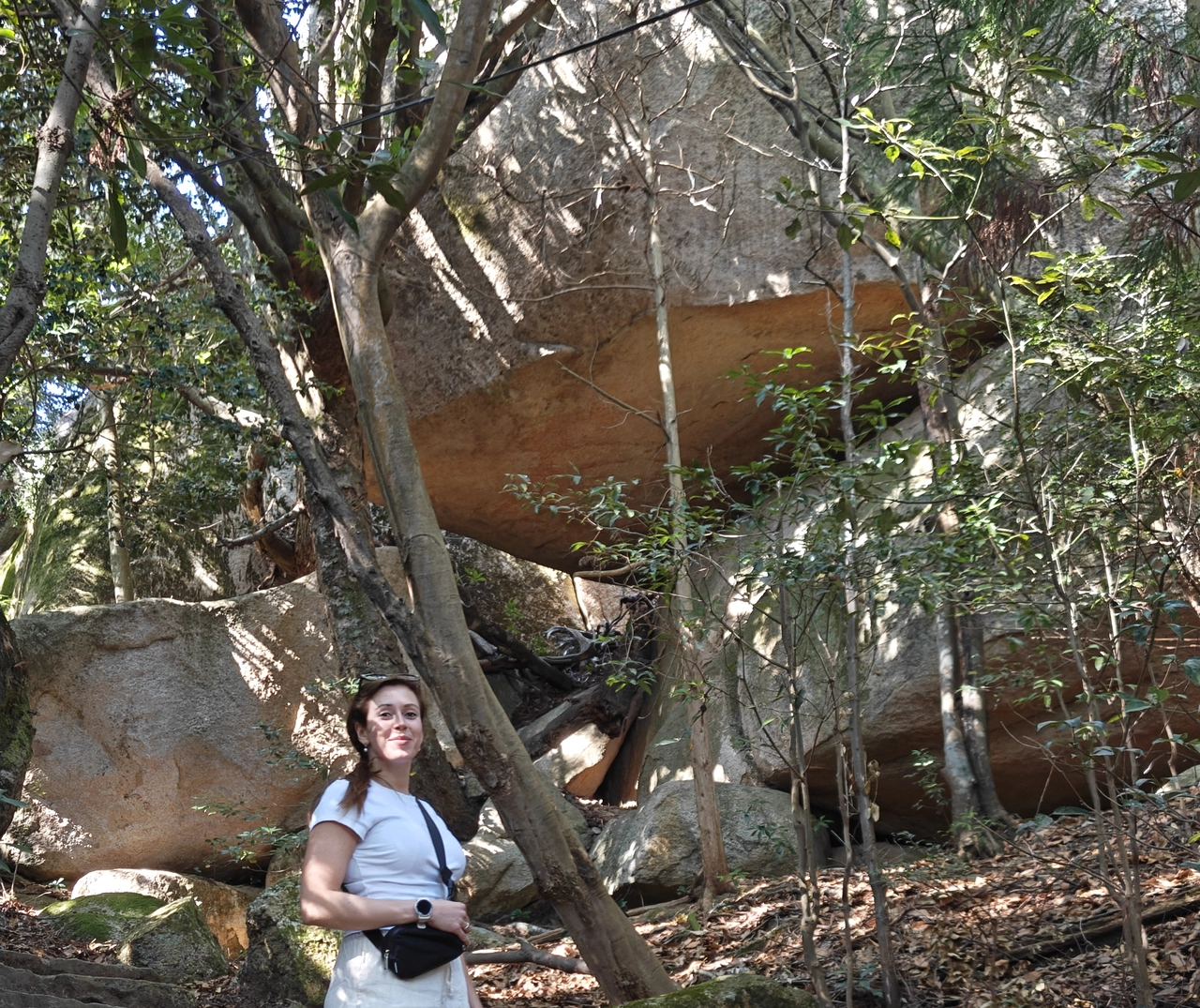
After plenty of huffing and puffing, we finally crested the summit. Fun fact: I clocked in as the #5 fastest ascent on Strava worldwide. Not that I’m bragging... much. As the day wore on, we opted to take the cable car back down, just in time to catch the final run of the day. Phew!
To celebrate, we tucked into a spectacular bento at a tucked-away spot called Nowa Café. It was pricier than the usual ¥1,000–1,500 (about £8–12) meals we’d been enjoying, but completely worth it after that climb.
Hakone
"Mountains, mist, and memory — Hakone invites you to slow down and simply be." — Unknown
30–04–2025
Our second-to-last stop was the scenic mountain town of Hakone, located southwest of Tokyo. At this point in the trip, we were starting to loop back east, and the bullet train ride to get there was our longest yet—taking up the better part of the day.
Hakone is known for its deep forested mountains, natural hot springs, and surprisingly impressive art museums. It’s primarily a resort area, famous for its high-quality onsen and breathtaking views of Mt. Fuji on clear days. A peaceful change of pace from the buzz of the cities.

Our accommodation in Hakone was Hotel Okada—or more accurately, a ryokan, a traditional Japanese inn. It was a bit of a trek uphill from the main station, which proved challenging with our travel backpacks weighing us down. But once we arrived, it was clear the effort was worth it.
Our room featured classic sliding doors, low beds and tables, and a serene view of the surrounding greenery. Best of all, we had access to an onsen bath fed by the natural hot springs, a peaceful retreat we took advantage of every day.
01–05–2025
Today, we decided to follow the classic tourist trail, starting from the main port in Hakone. From there, we boarded a grand pirate ship. Yes, really... which sails across Lake Ashi. Formed by a volcanic eruption over 3,000 years ago, the lake offers some seriously picturesque scenery.
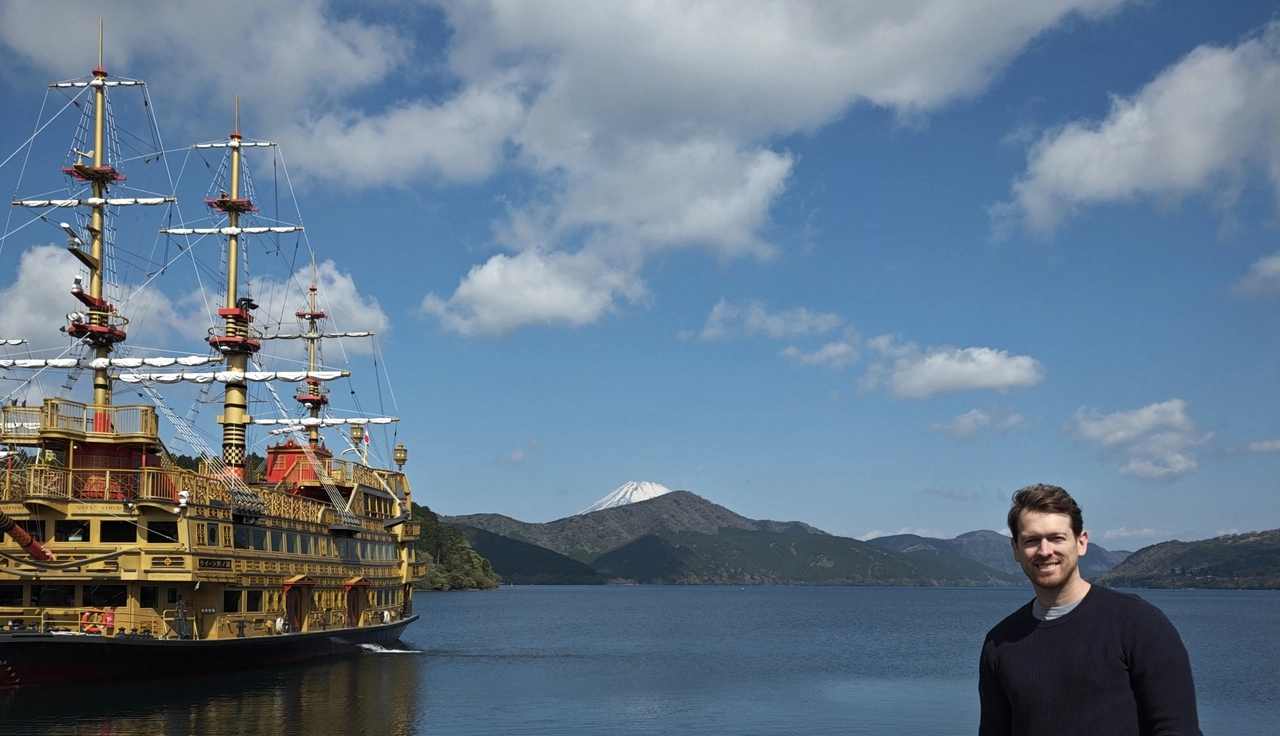
What made it even more special was the clear view of Mount Fuji in the distance. Visibility is rare, so we felt lucky to catch such an unobstructed sight. The view also included the iconic torii gate shrine by the lake’s edge, making the whole experience feel straight out of a postcard.
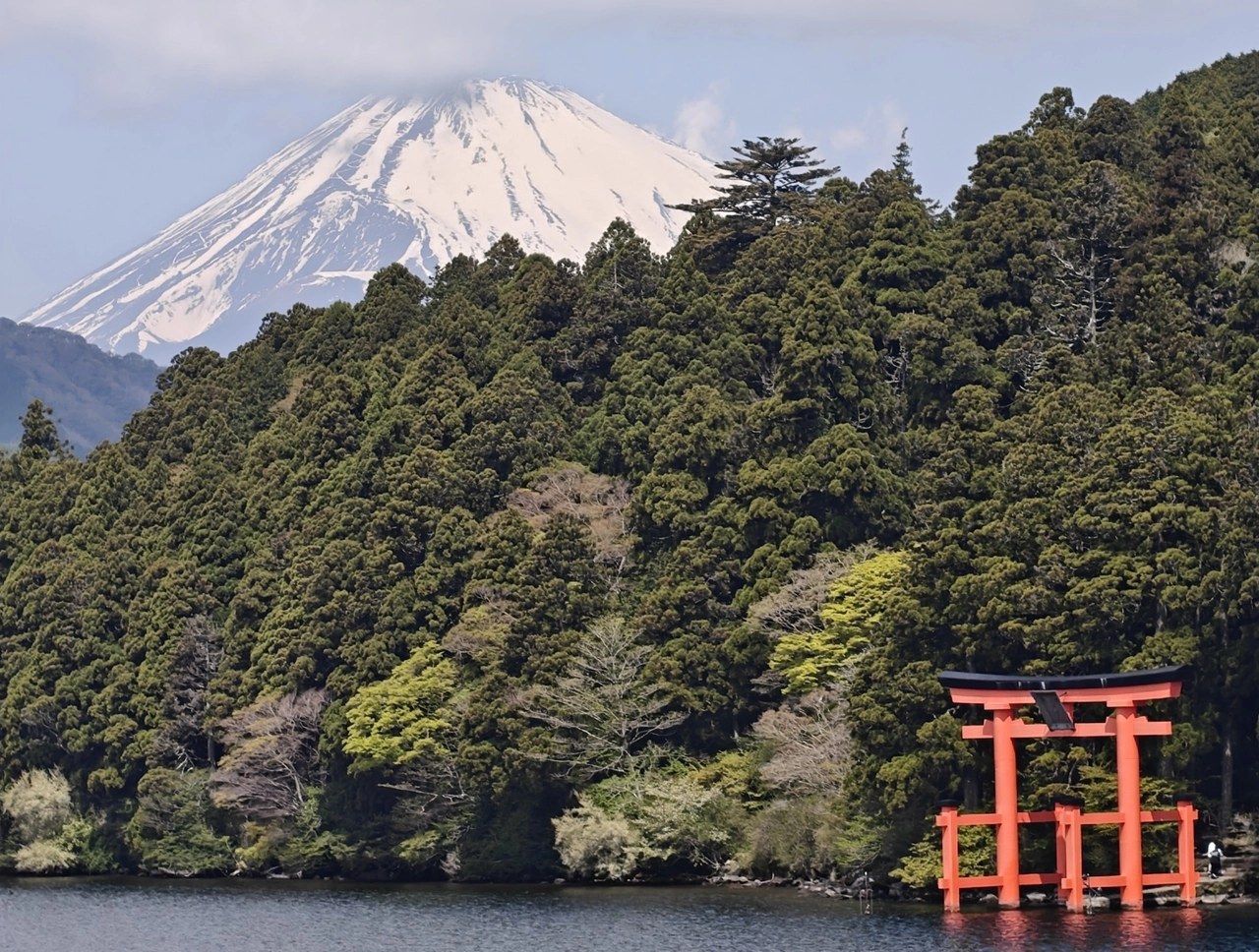
At Togendai Station, we hopped on the Hakone Ropeway, a scenic cable car that lifts you high into the mountains, offering views along the way. One of the main stops is Owakudani, a dramatic volcanic valley known for its active sulfur vents, which, trust me, you can smell long before you see them.
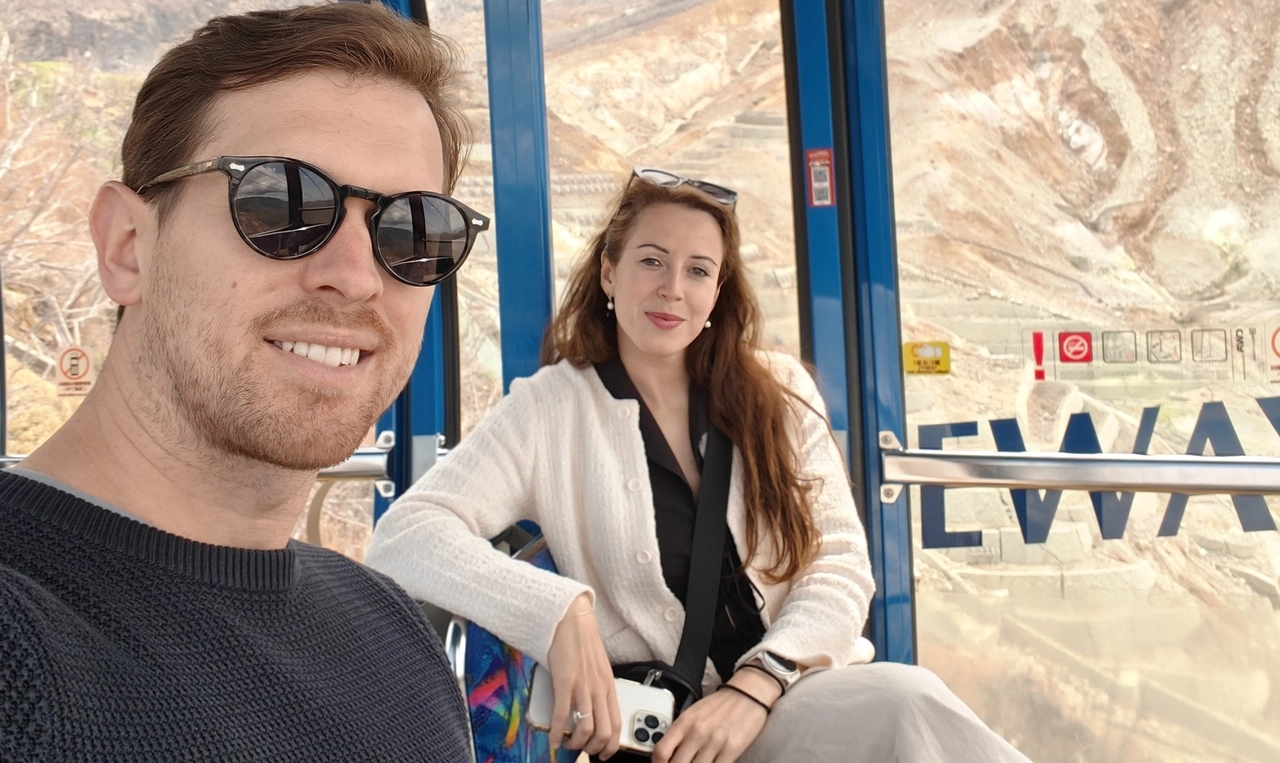
A local speciality here is the black eggs, boiled in the sulfur-rich hot springs. Legend has it that eating one adds seven years to your life. Naturally, I went for ten… just kidding (kind of).
We continued on to Gora, where we took a well-earned break at Coffee Camp, enjoying a brew before heading to Tamura Ginkatsu-tei; a bustling spot famed for its tofu katsu served with rice and miso soup. It was hands down one of my favourite meals of the trip.
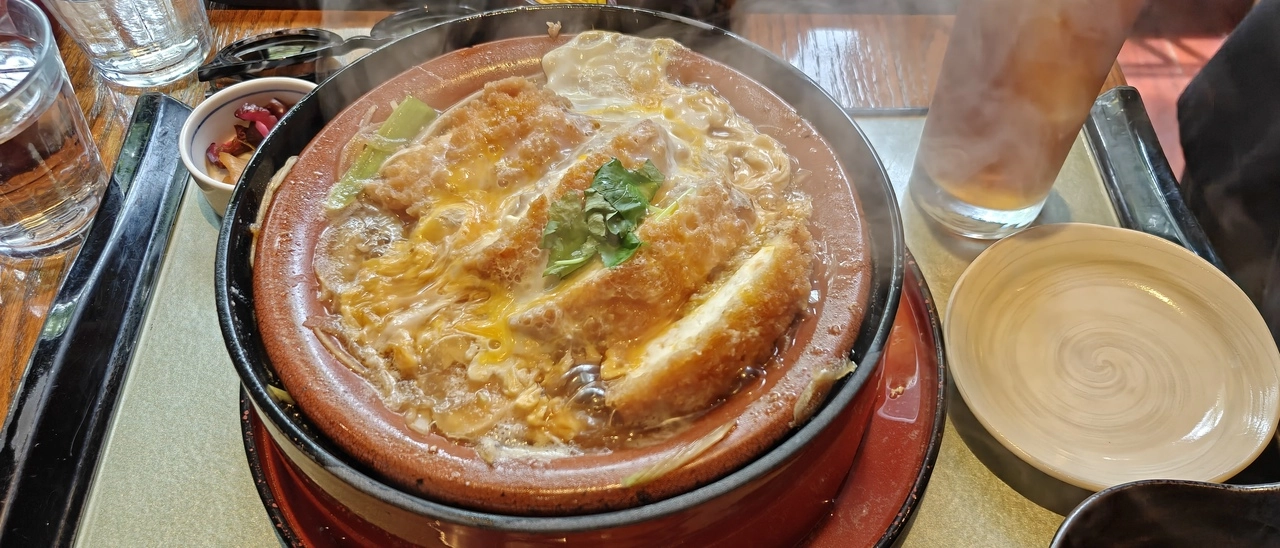
Our final stop in Hakone was Gora Park, a peaceful retreat before heading back to our hotel. The park features elegant greenhouses, a rose garden, and tranquil corners with water fountains.
Interestingly, it’s also the oldest French-style park in Japan, blending Western design with a Japanese mountain backdrop. A quiet, reflective end to our time in Hakone.
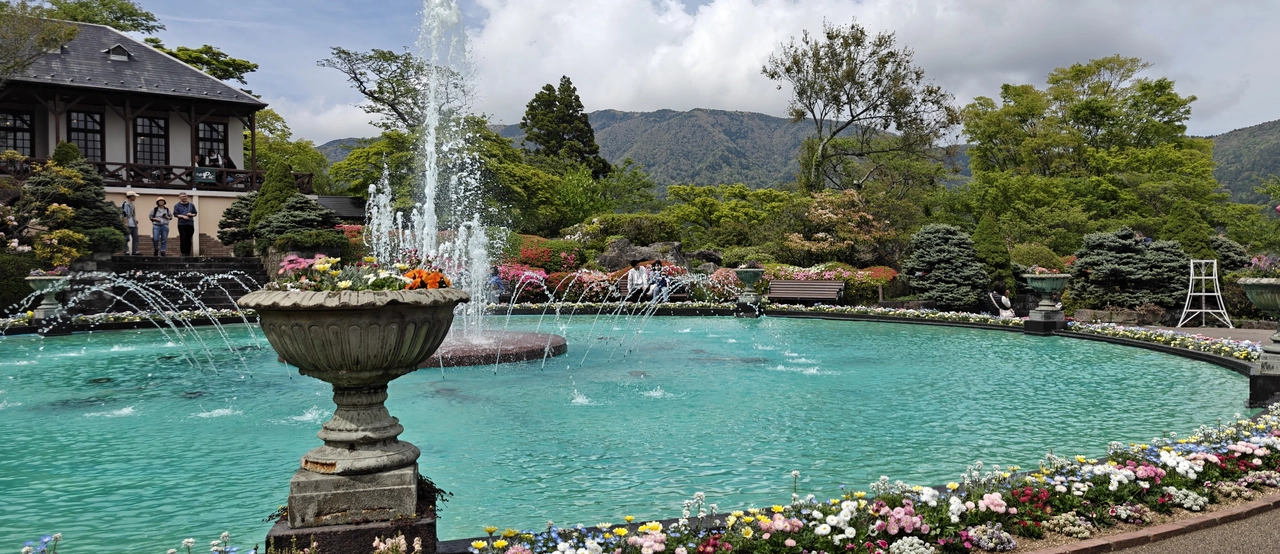
Tokyo #2
Our final stop brought us back to Tokyo for a couple of nights before flying home from Haneda. We stayed at the Park Hotel, which offered stunning views of the city skyline.
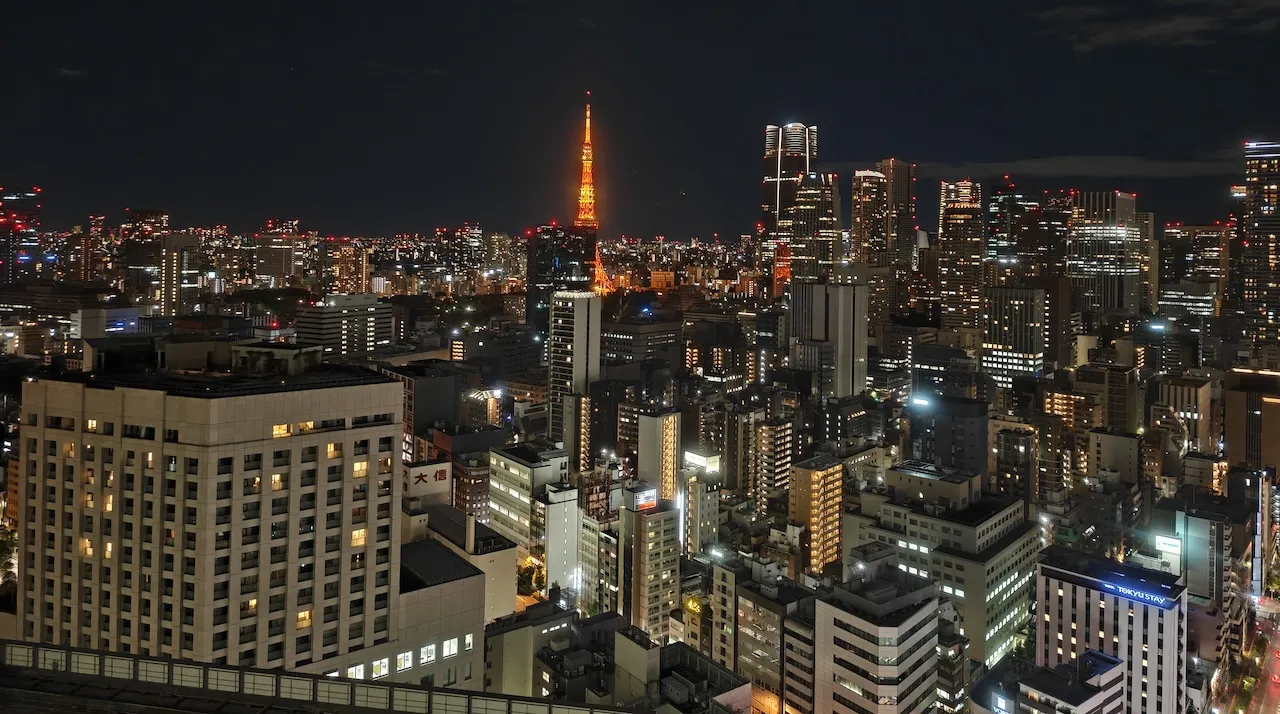
One highlight was teamLab Borderless; an immersive, ever-shifting world of vibrant projections painted across pitch-black walls and ceilings. It was a mesmerising experience… for about an hour.
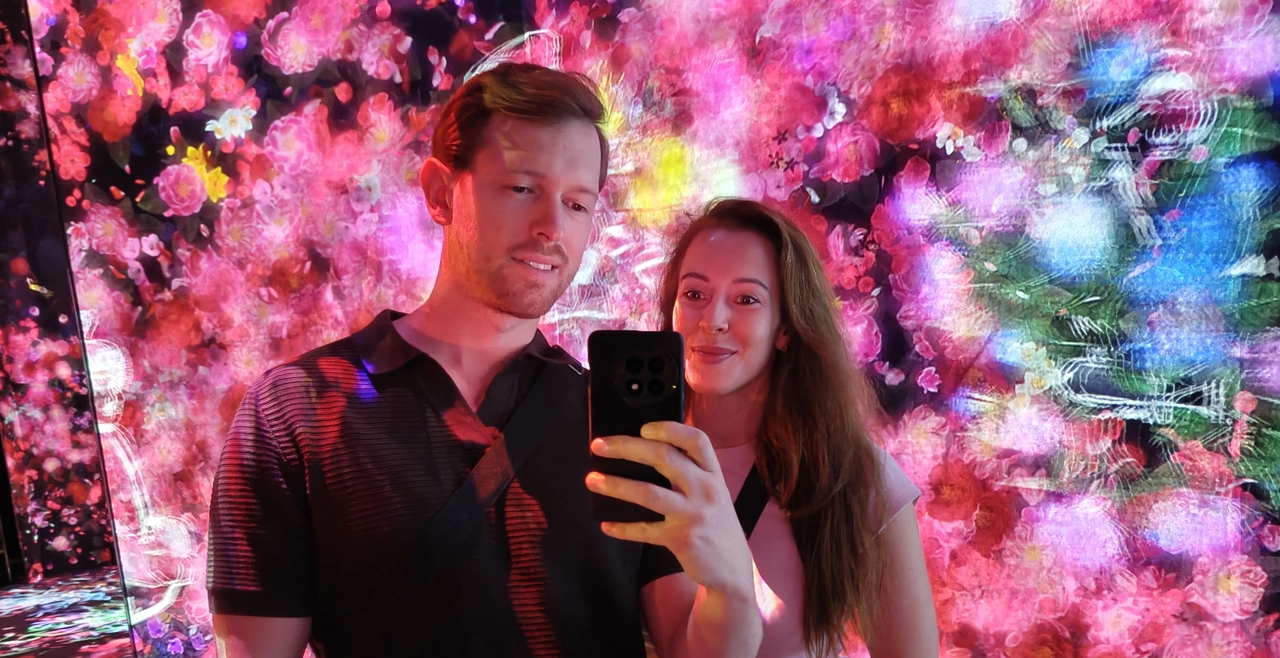
On our last day, we focused on gift shopping. Tokyo Station has an incredible mall filled with treats like Tokyo Bananas, Shiroi Koibito, and endless matcha-flavoured everything—I bought plenty. We even ended up in a massive supermarket that felt like a Japanese Amazon warehouse. They sold extra suitcases (clever move), and yes—we bought one. I've never owned so many flavours of KitKat in my life.
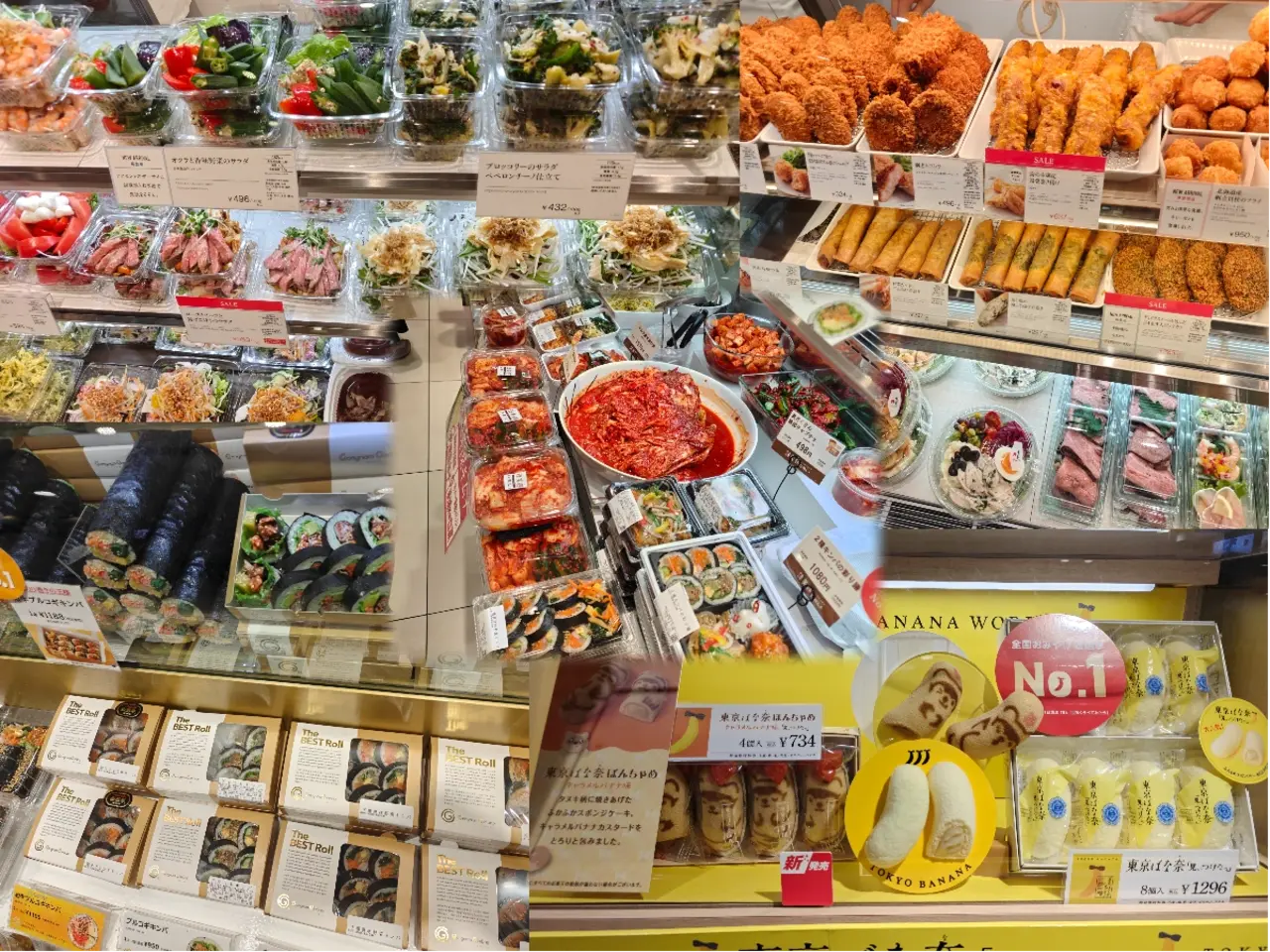
Conclusion
Given how limited our time in Japan was, it quickly became clear just how much more there is to see, do, and experience. Still, I absolutely loved it — the trip opened my eyes to a different, more solitary, and deeply respectful way of life.
The food was on another level — not just in flavour, but in sheer quality. Even the fruit tasted better than back home. Fried food was everywhere (not that I’m complaining), while vegetables were more elusive. Queuing for food felt like a national pastime — but weirdly, it made meals feel even more special.
We walked a lot — I averaged 18–22k steps a day. No wonder everyone is so slim over there; just getting around takes effort, especially when navigating the labyrinth of undergrounds and train systems. Without Google Maps, we would’ve been lost. That app was a godsend.
What stood out most was how kind, respectful, and safe everything felt. I had my phone out constantly and never once felt uneasy. That said, I did notice signs of Japan’s intense work culture — men in suits nodding off on late-night trains, or even passed out on the street after what must have been a brutally long day.
Each place we visited was beautiful in its own way — offering the perfect blend of buzzing city energy, historical landmarks, and serene nature trails. And yes, the arcades and game centers were just as vibrant as I imagined. I’d go back in a heartbeat — but next time, I’d love to explore the lesser-known regions. The big cities are amazing, but there’s a whole side of Japan that feels like it’s waiting to be discovered.
Arigatou gozaimasu, Japan. Until next time.
